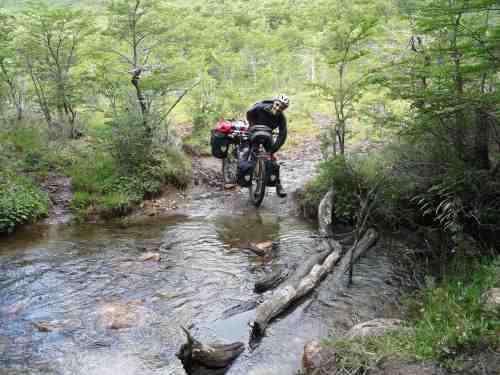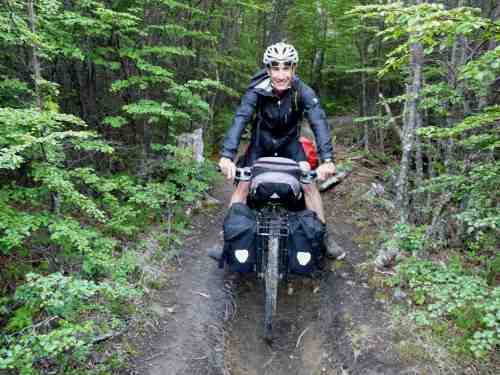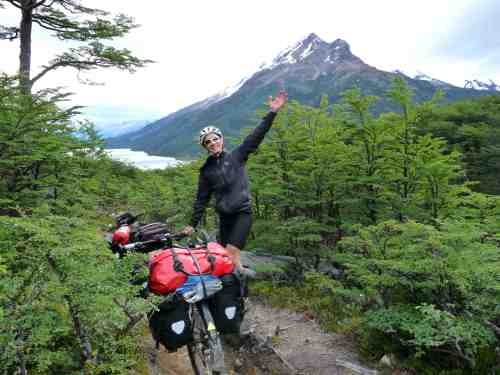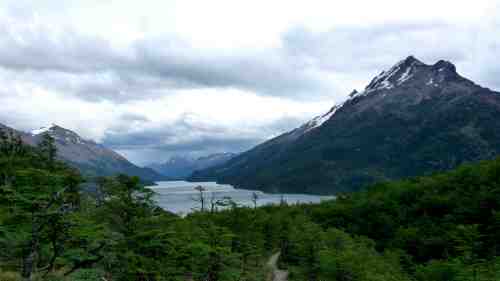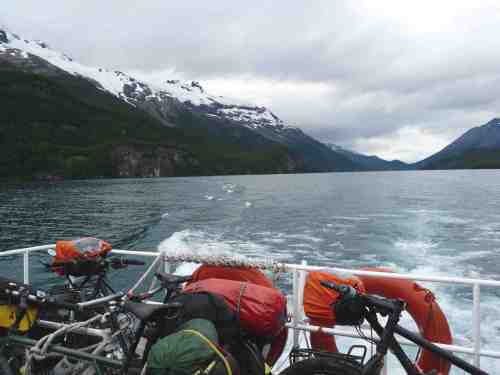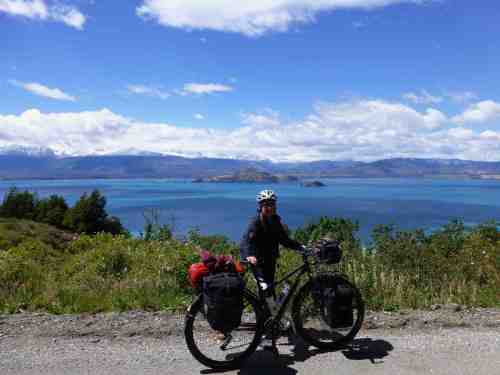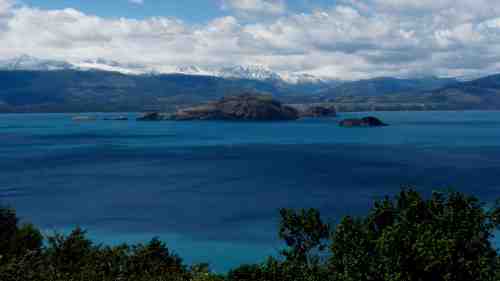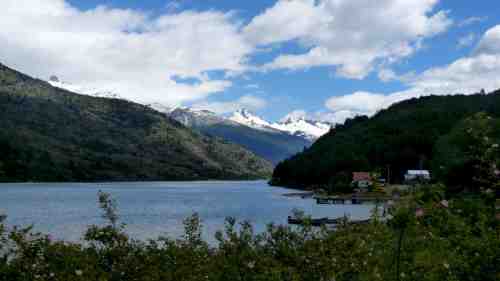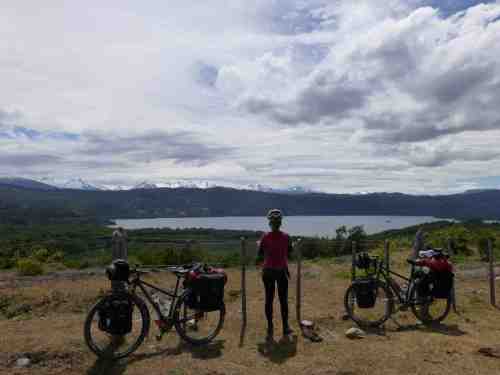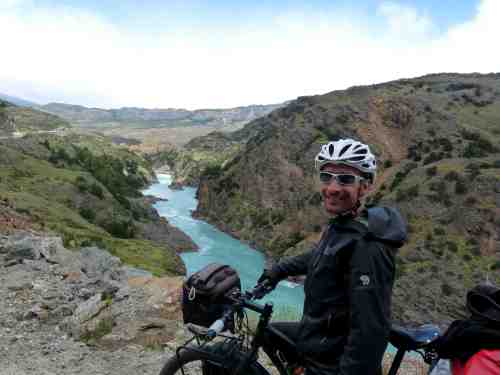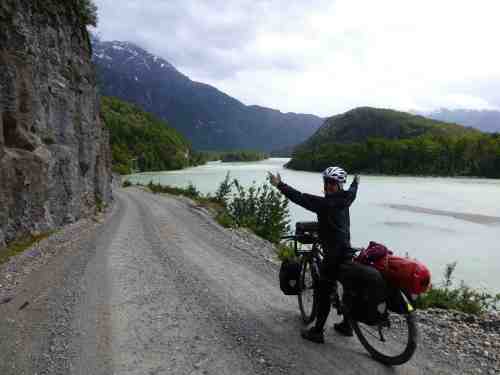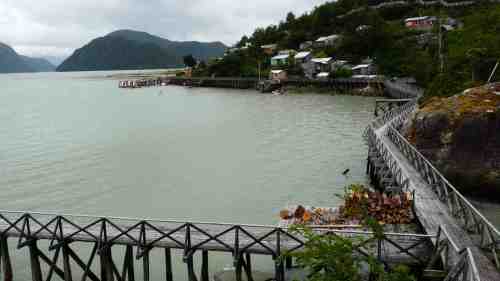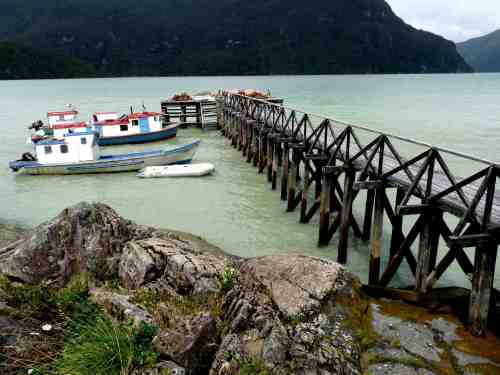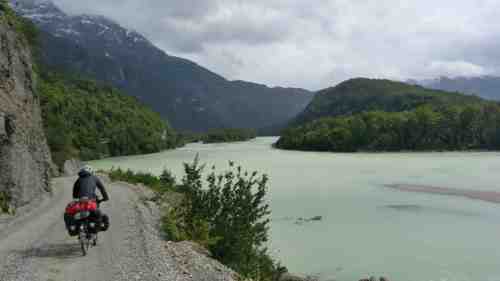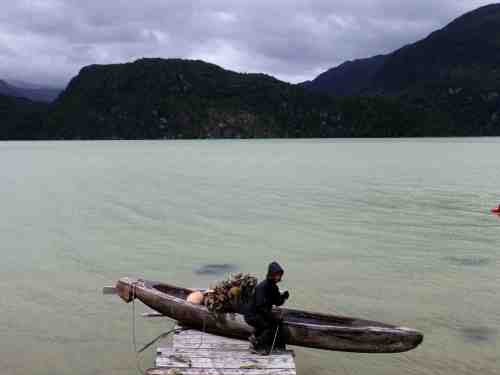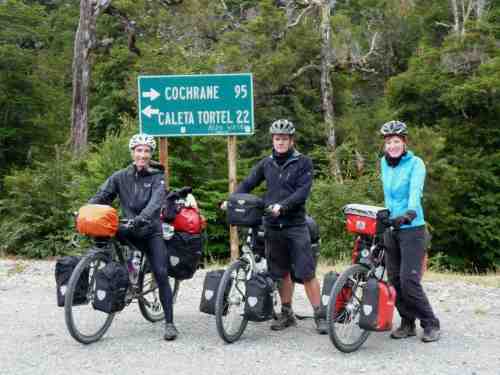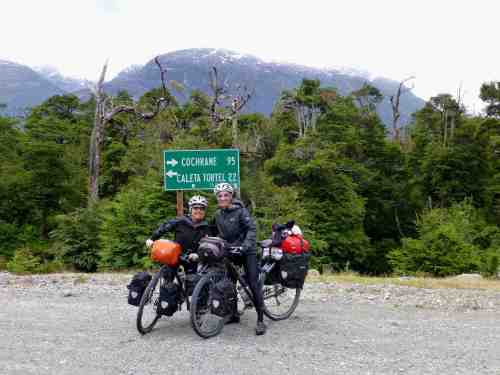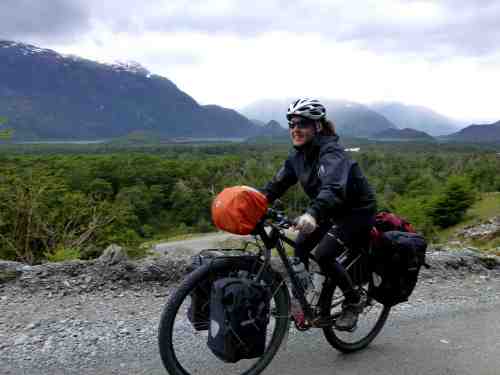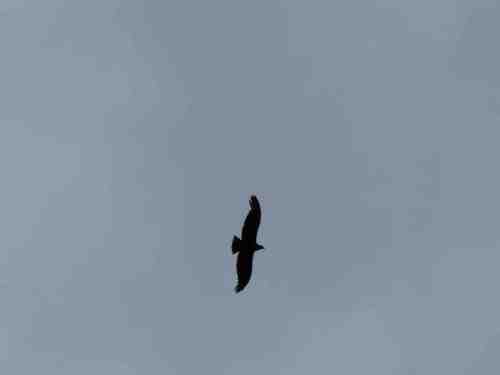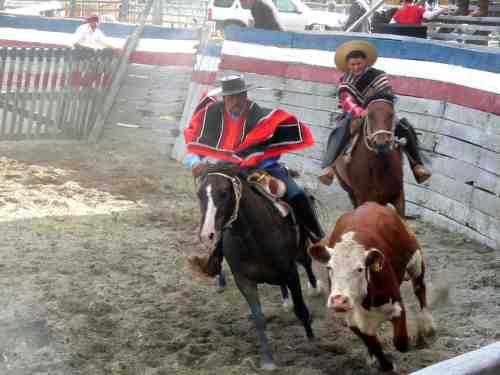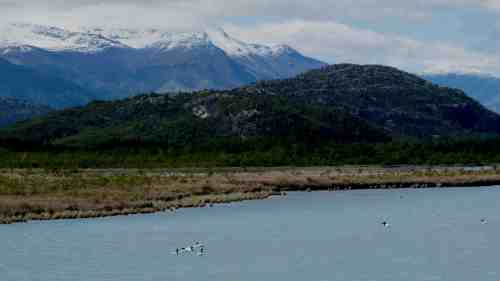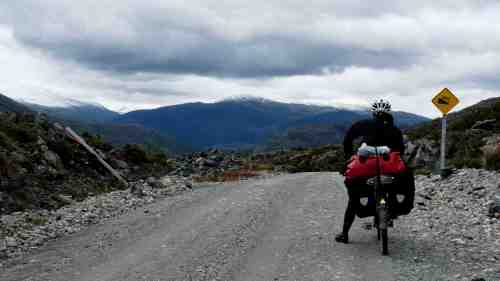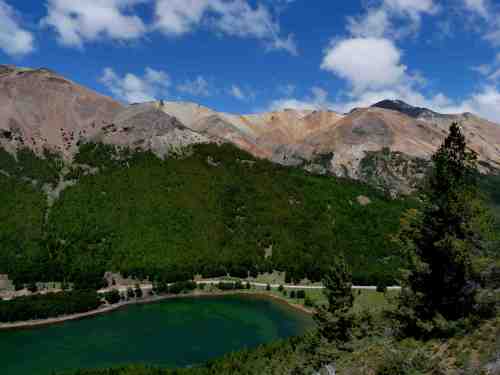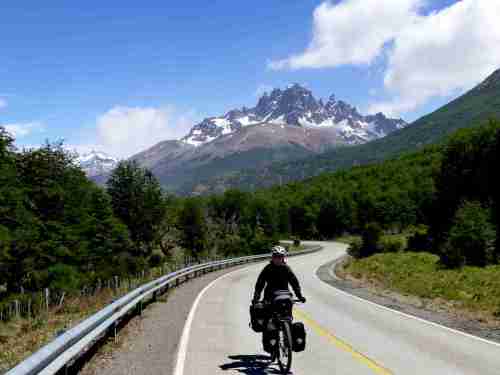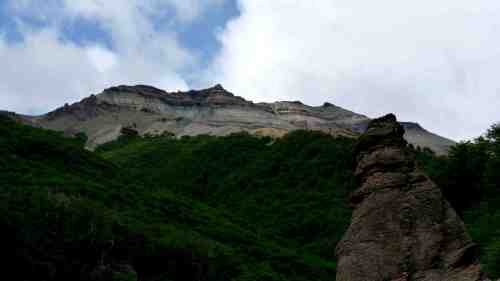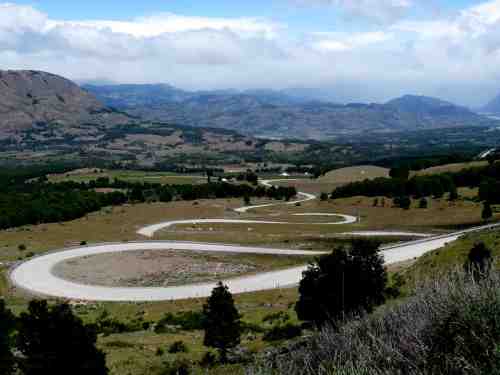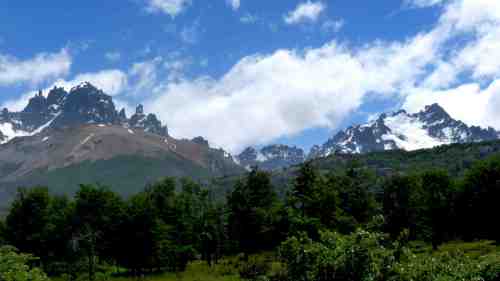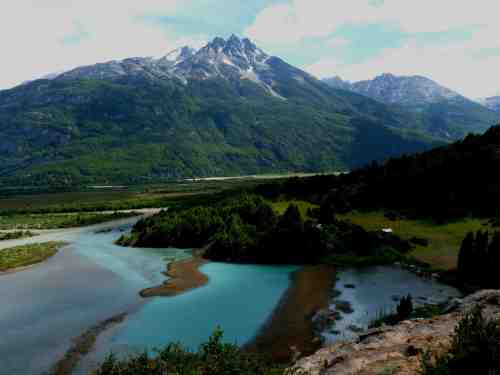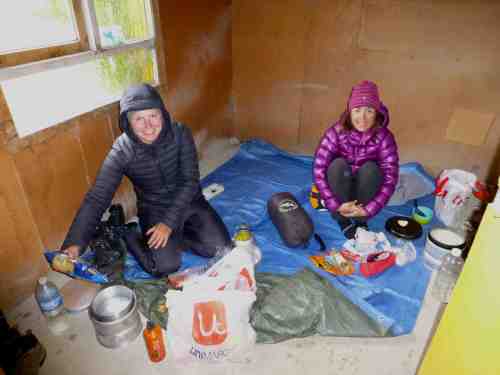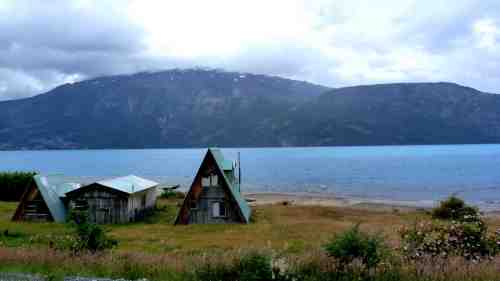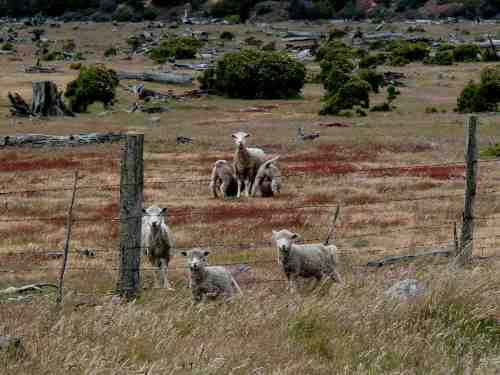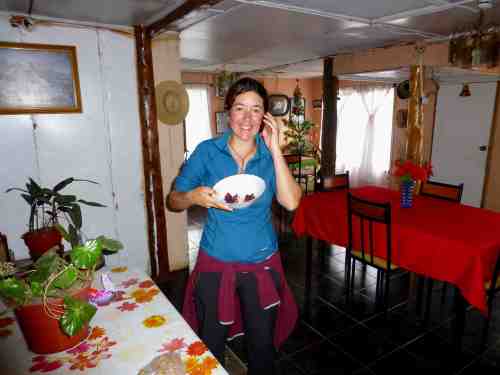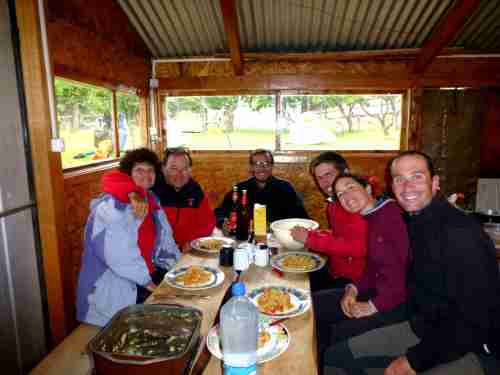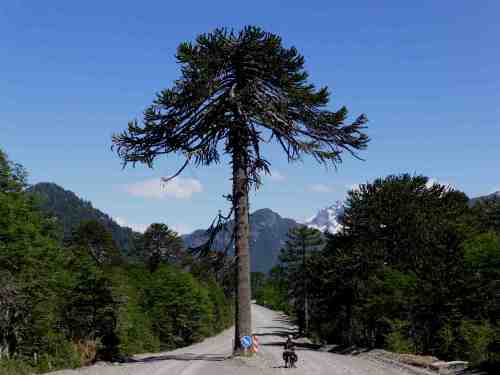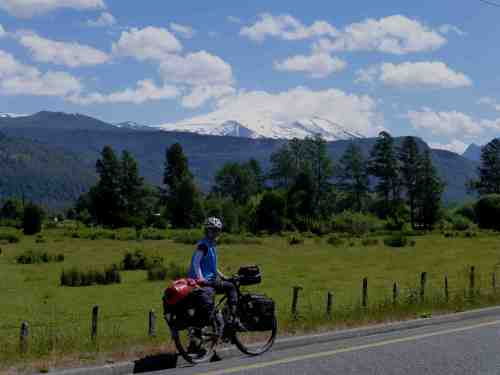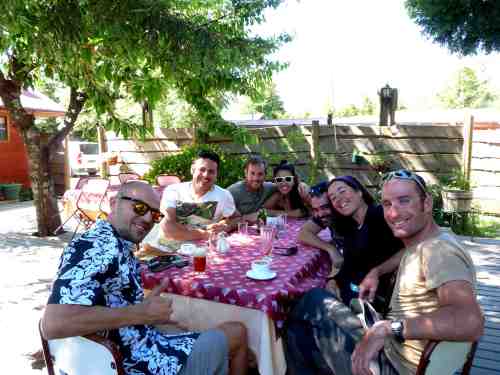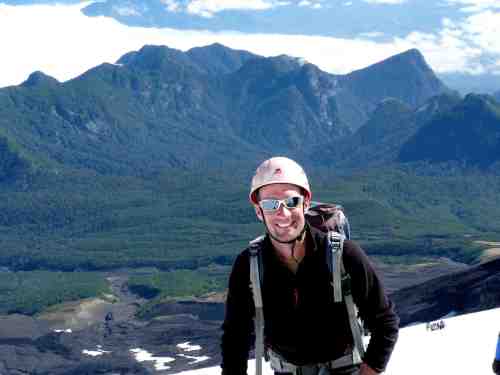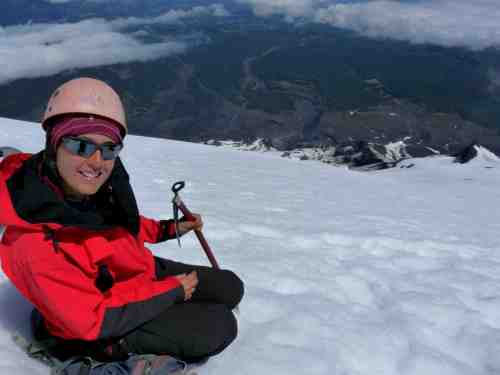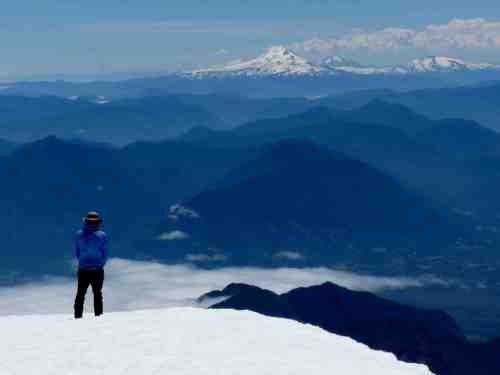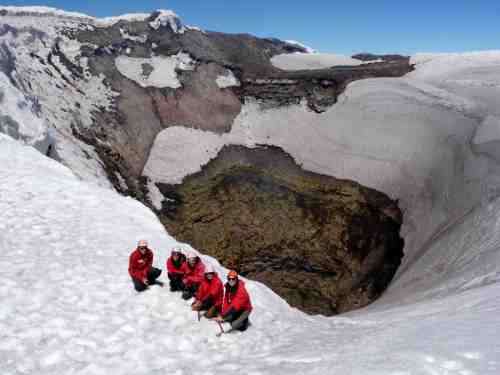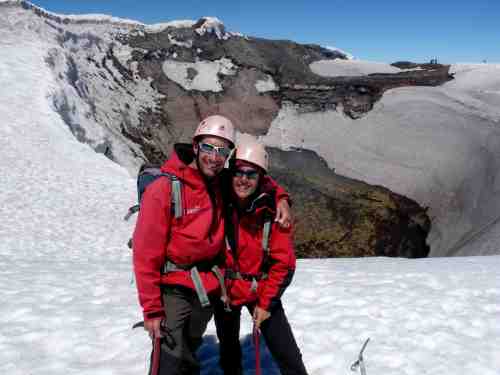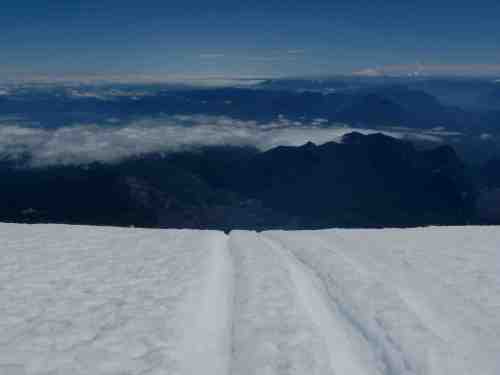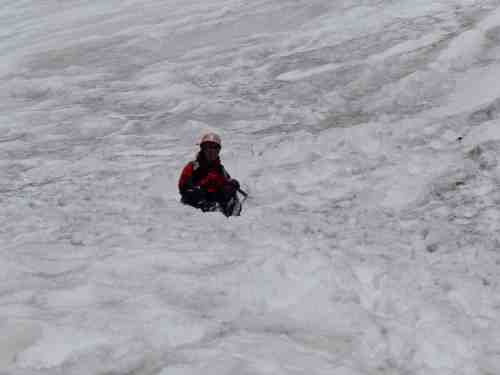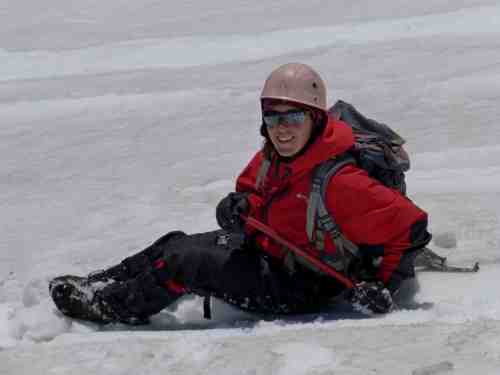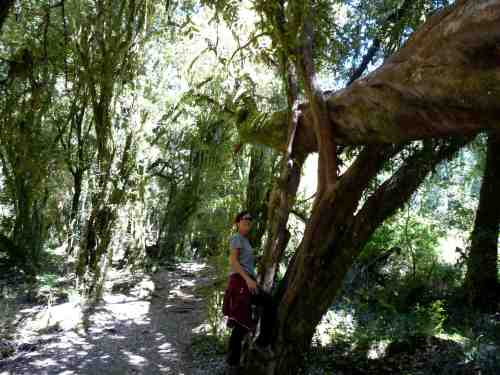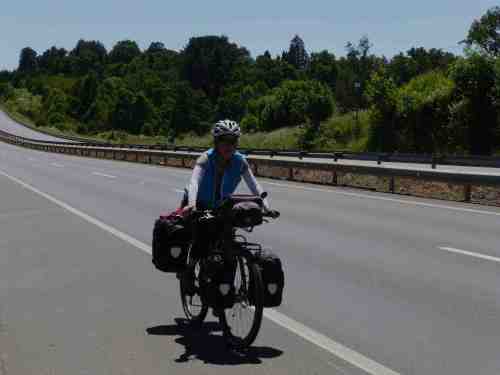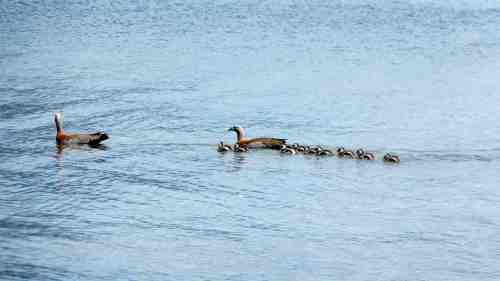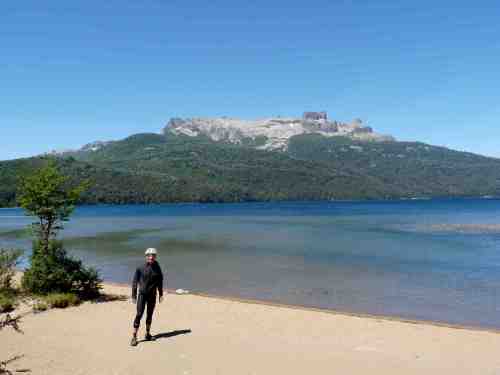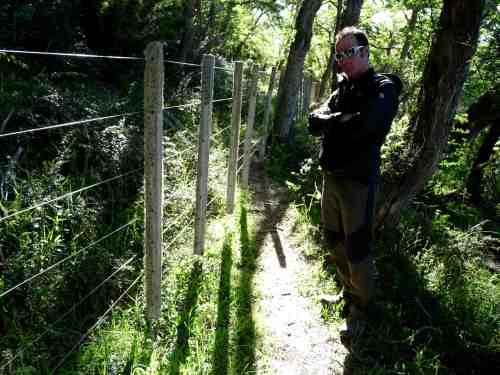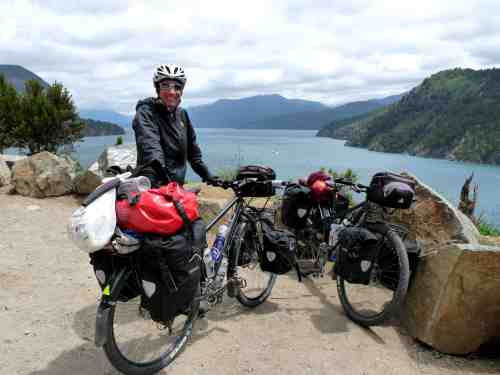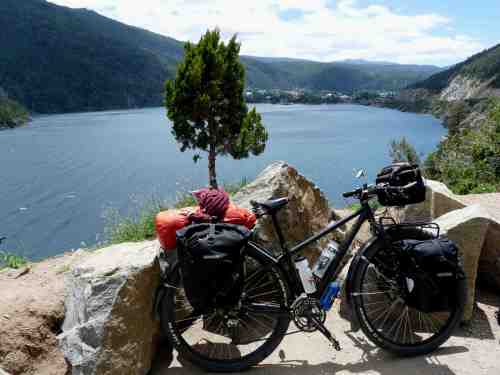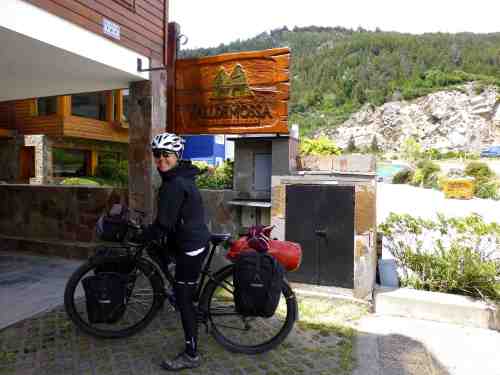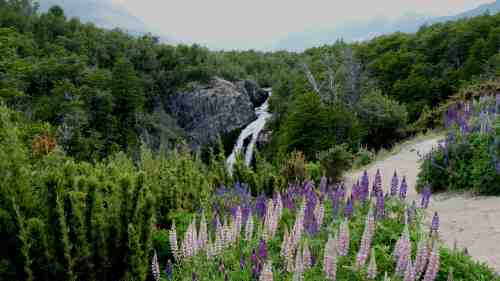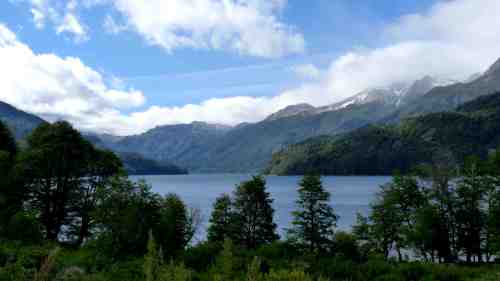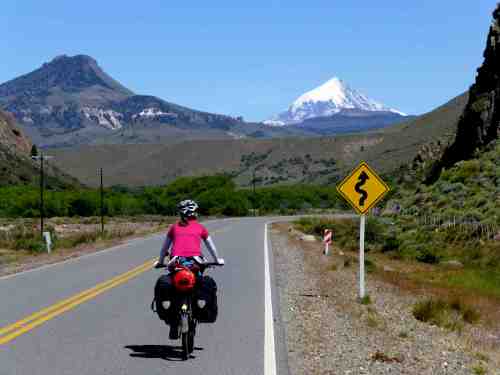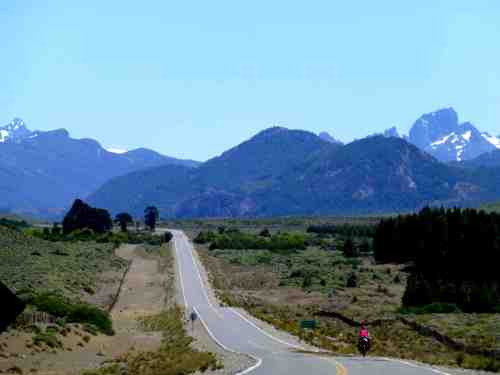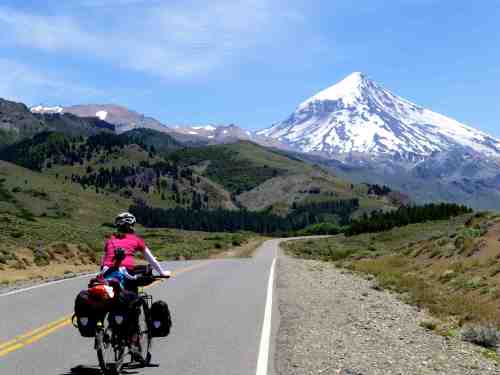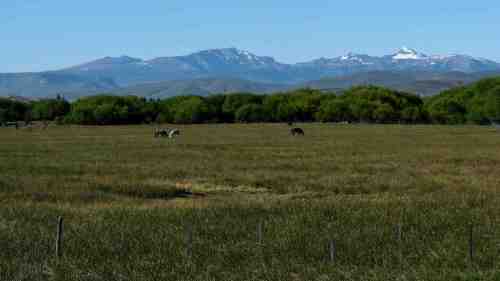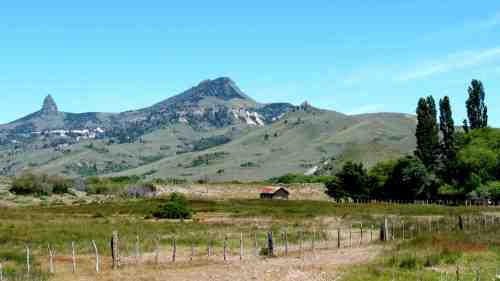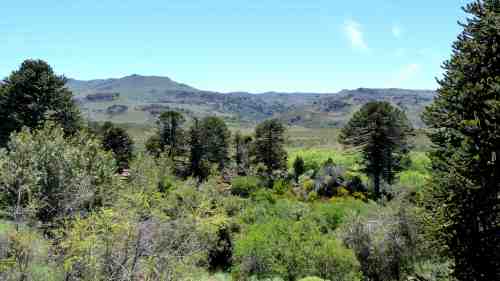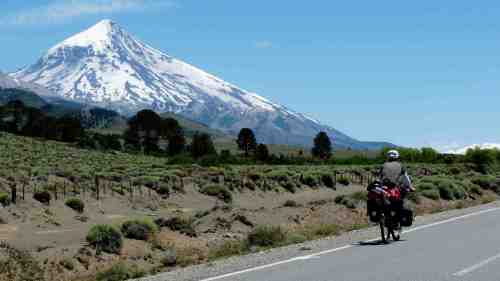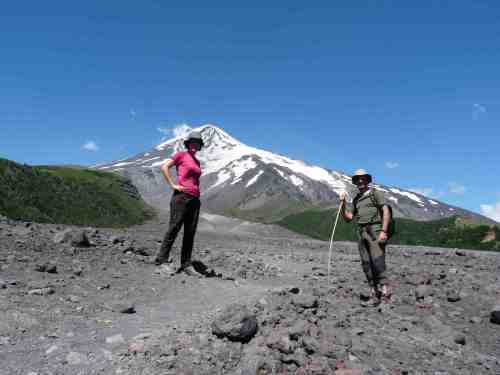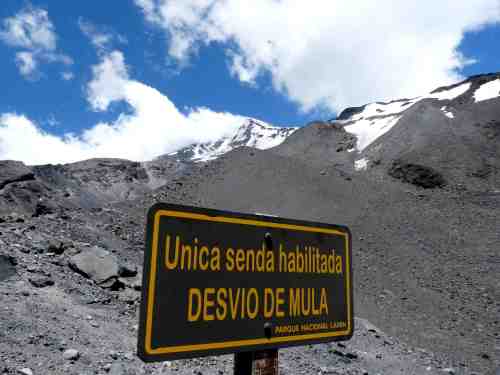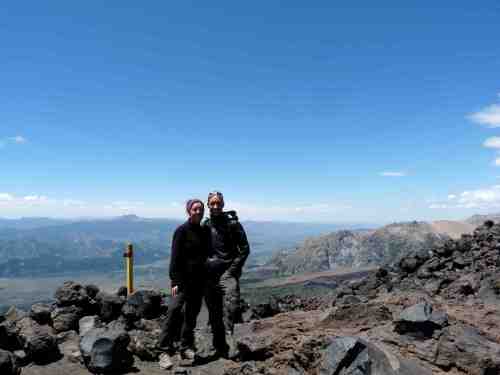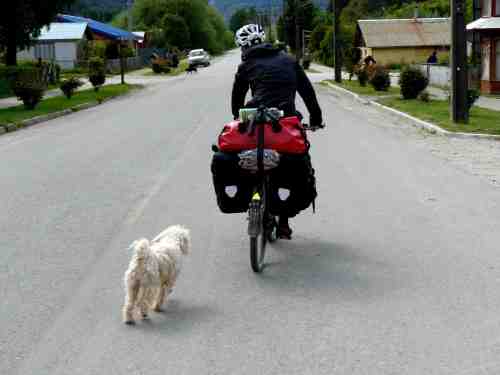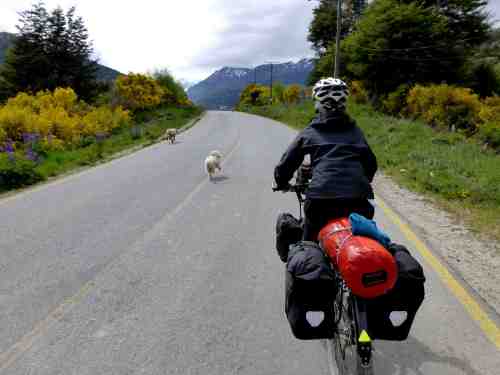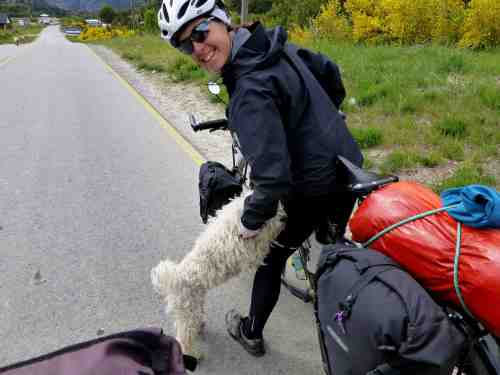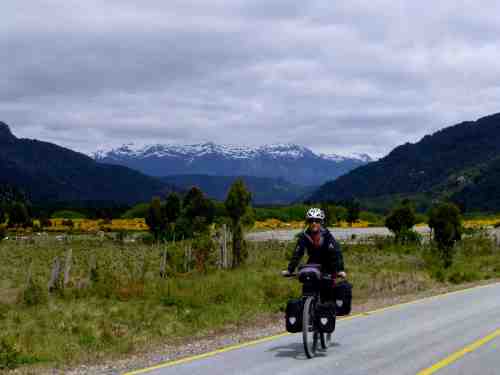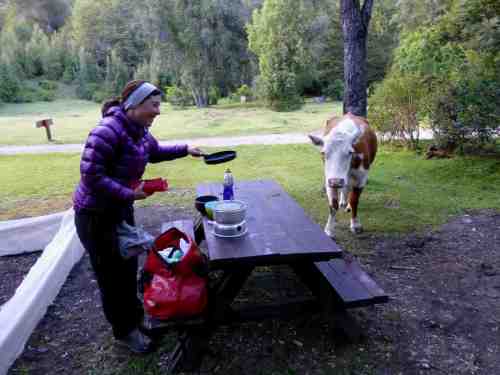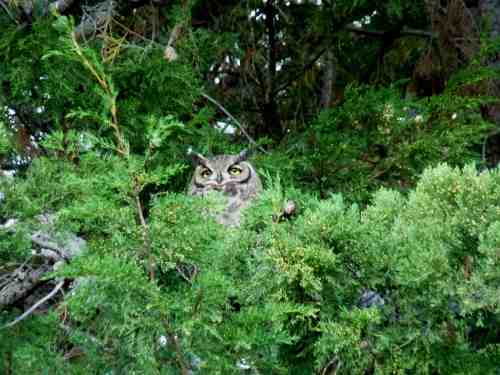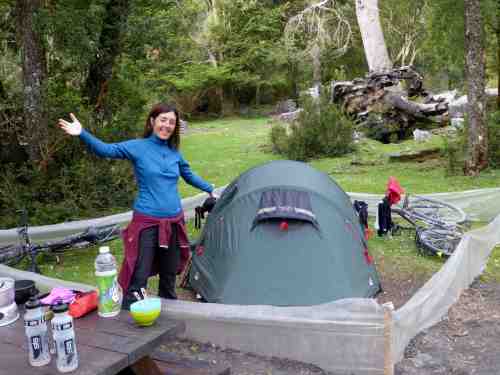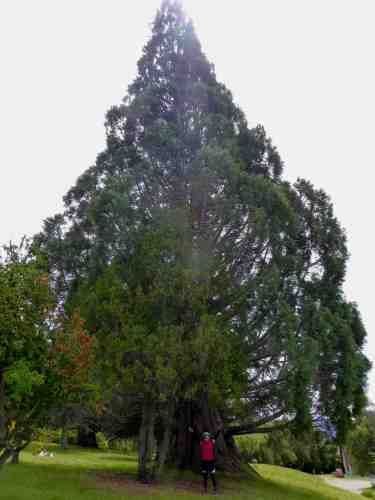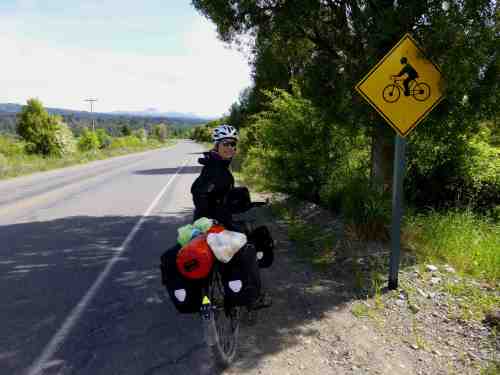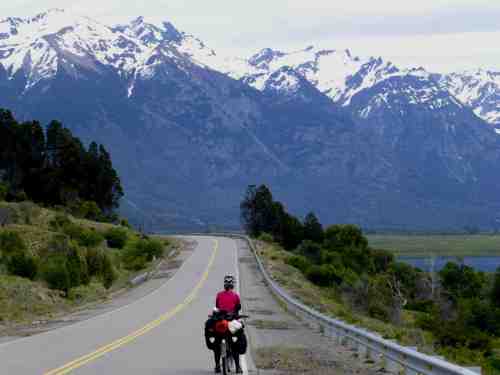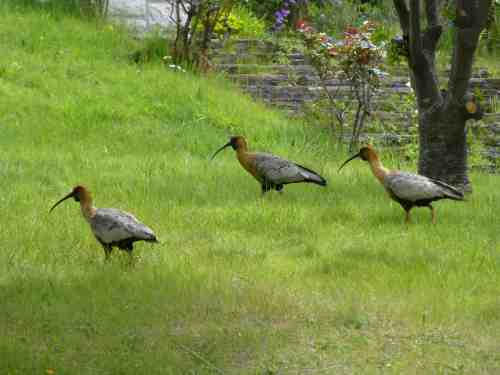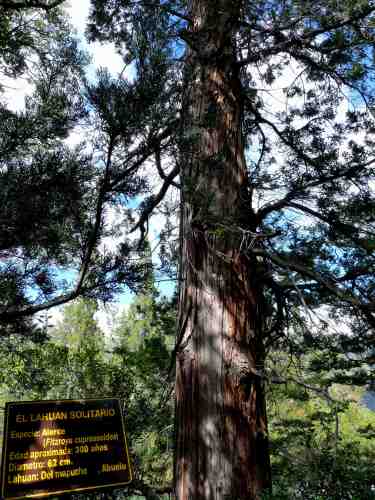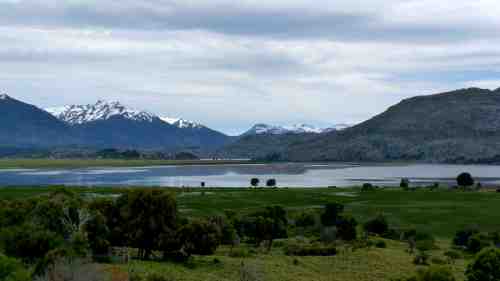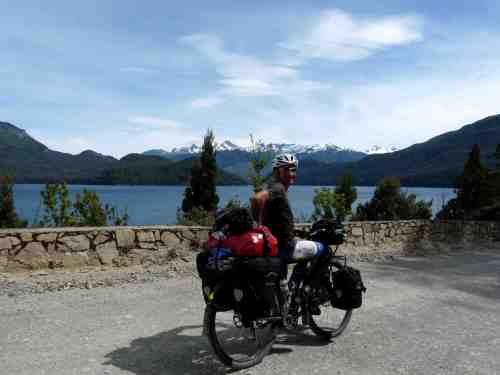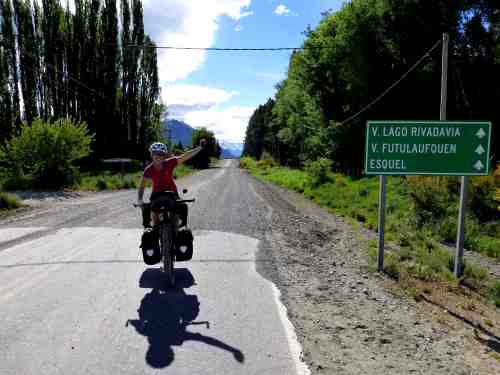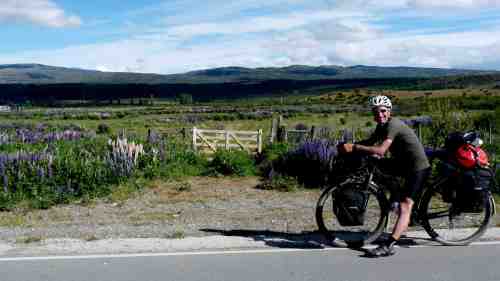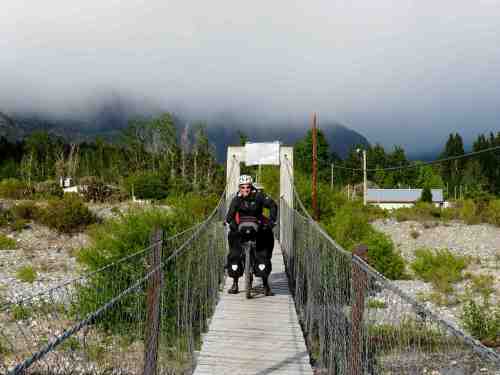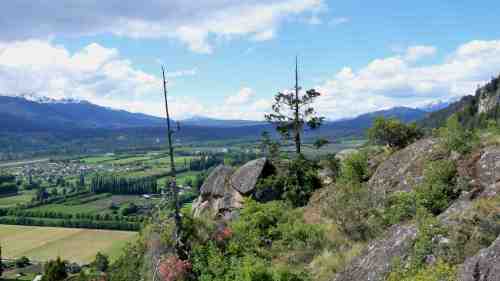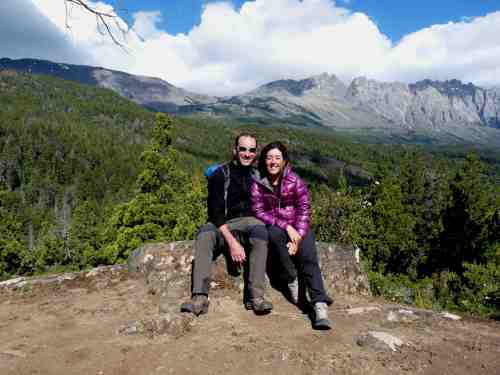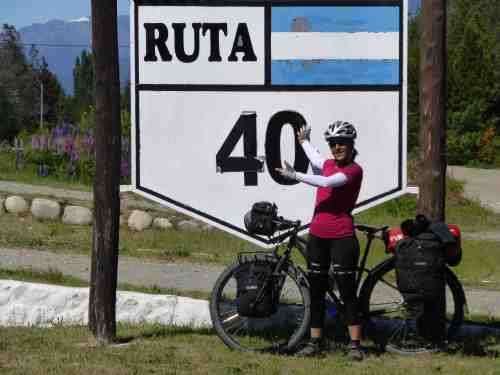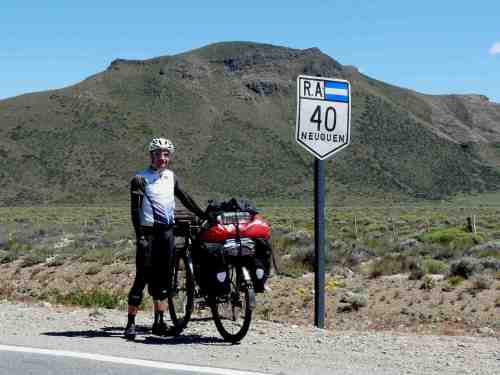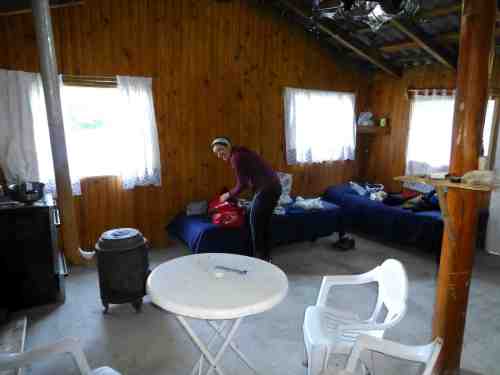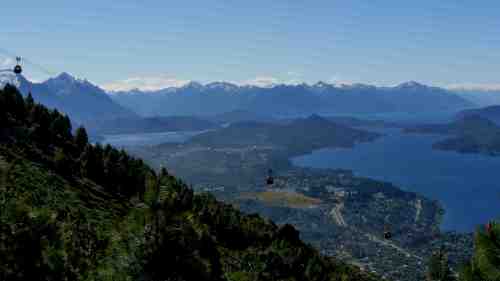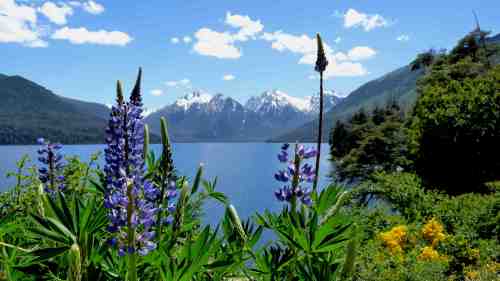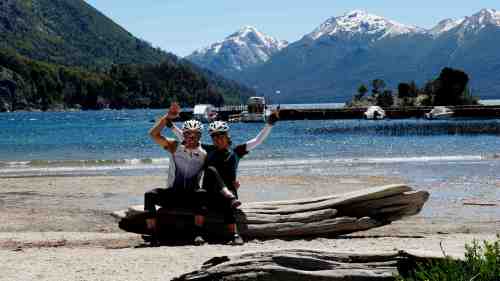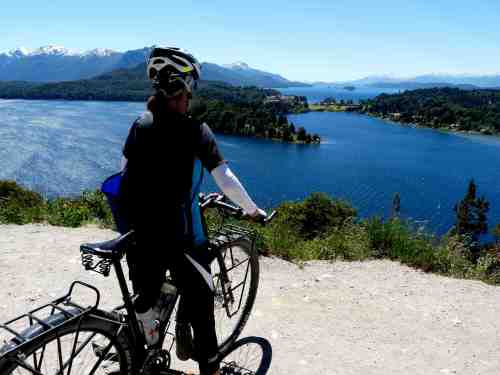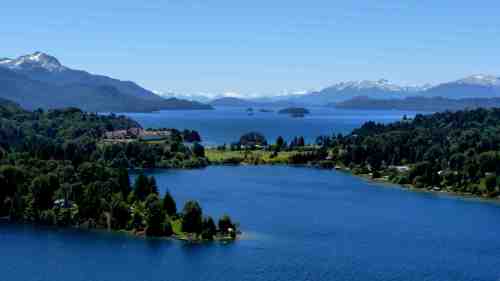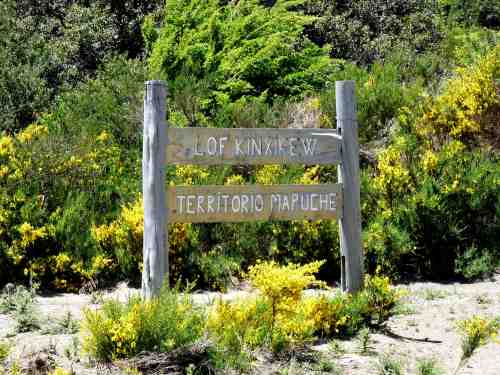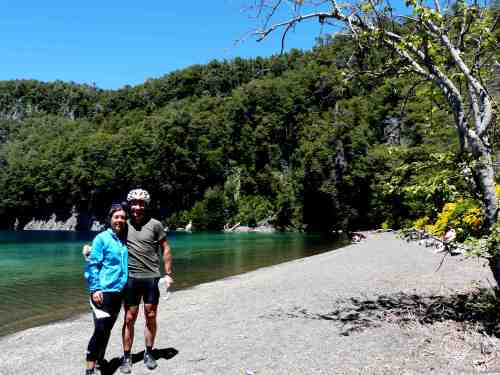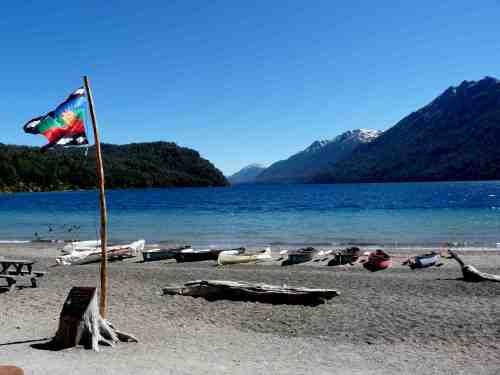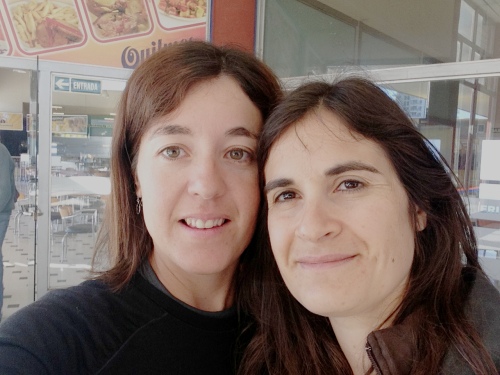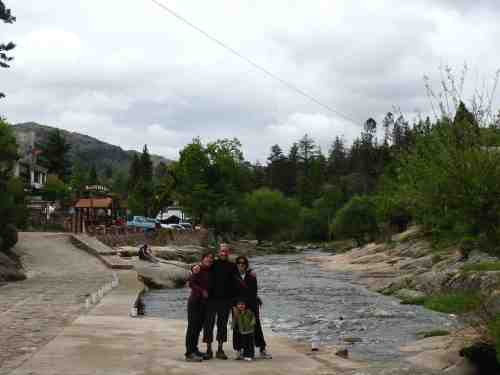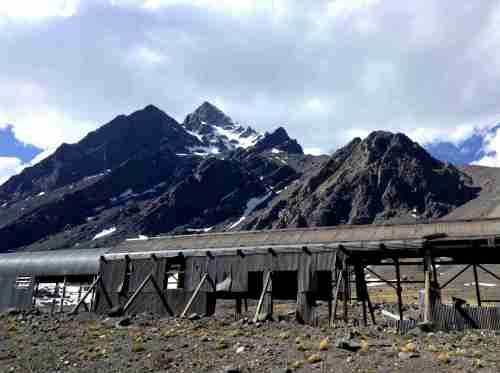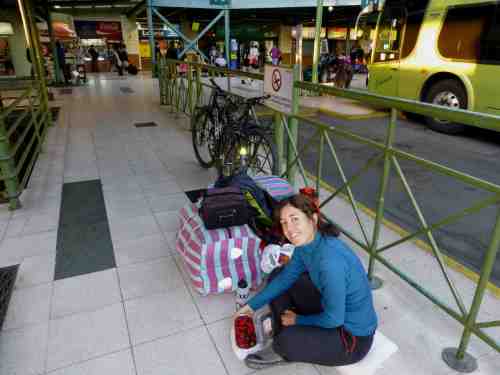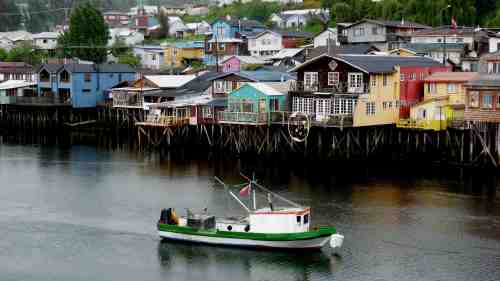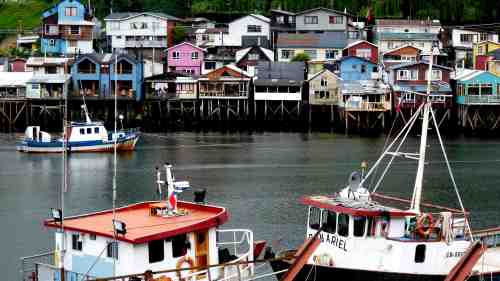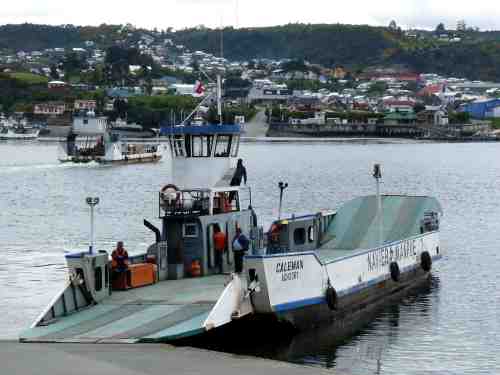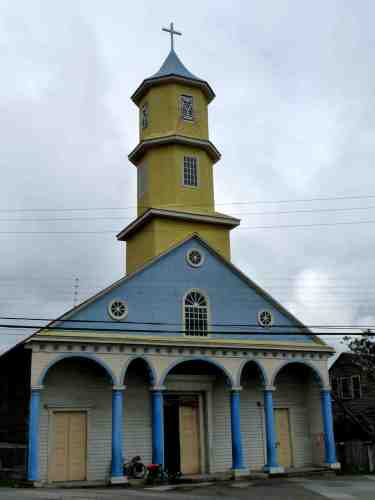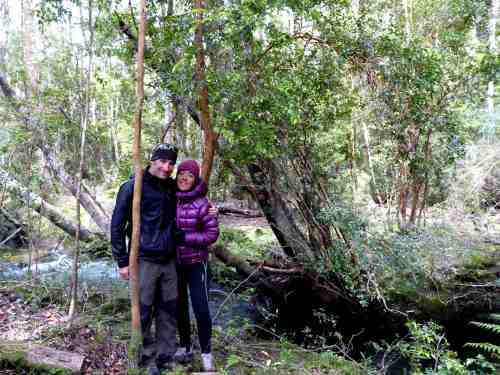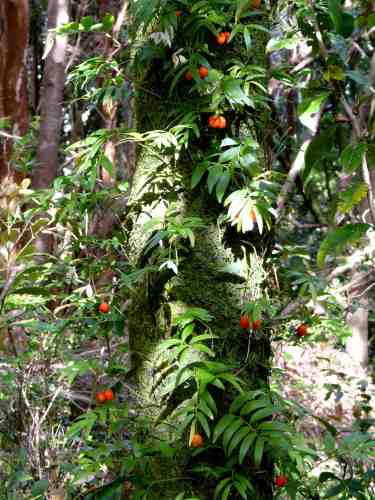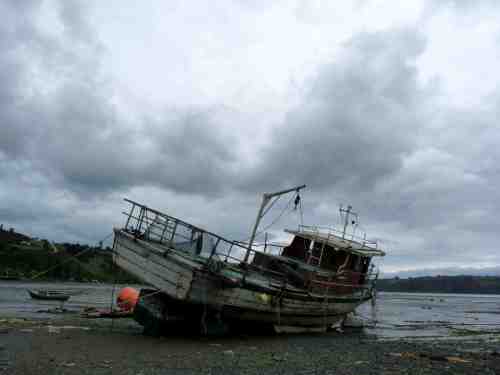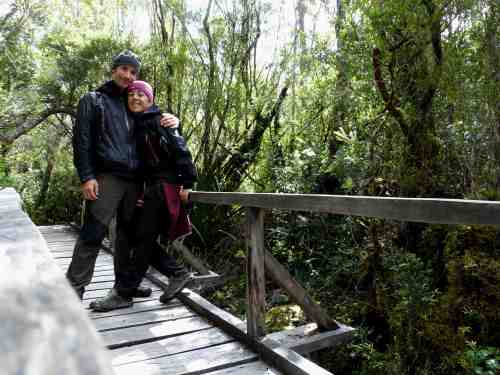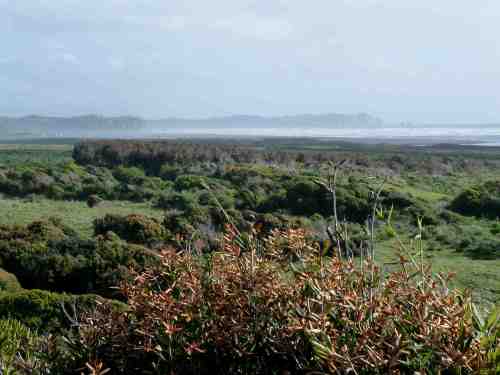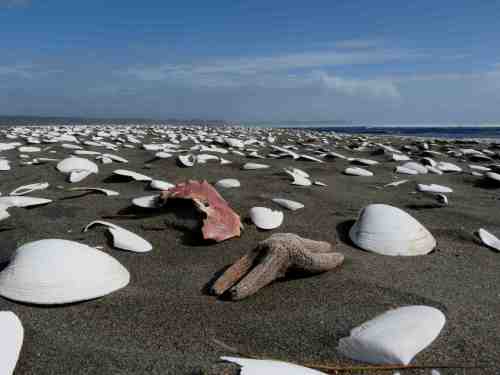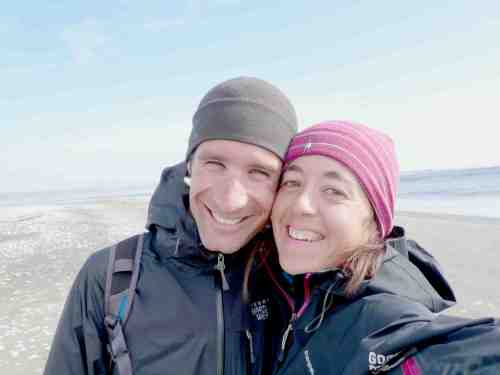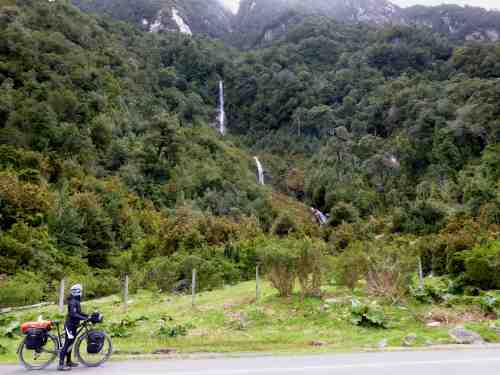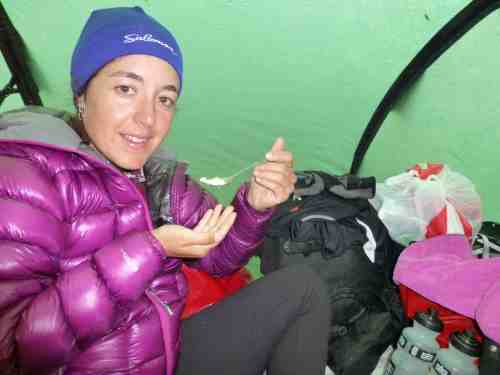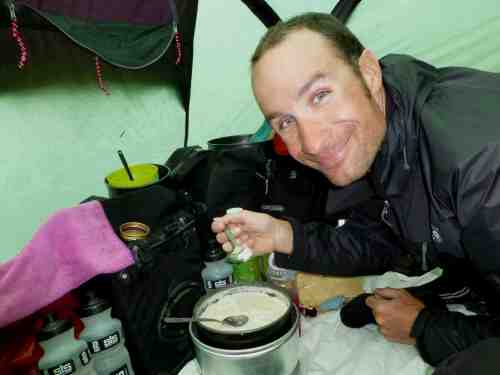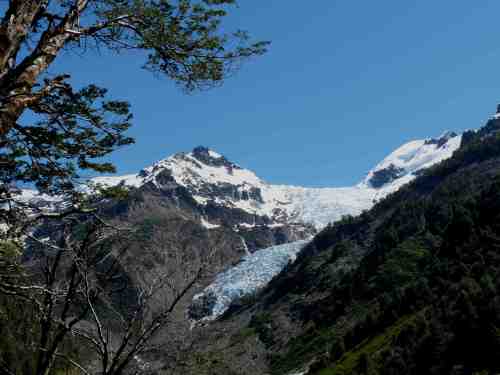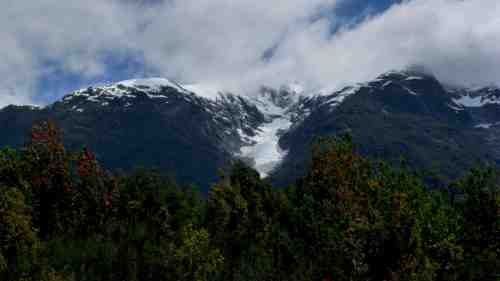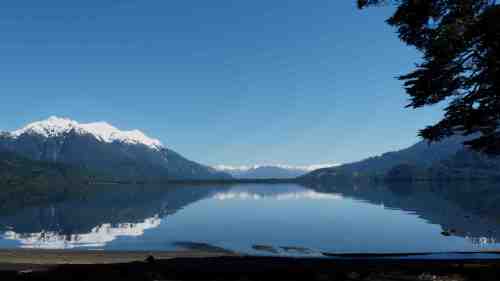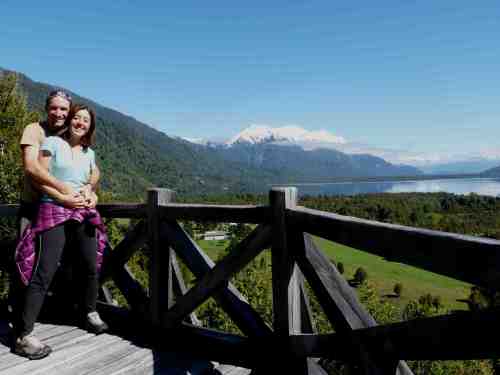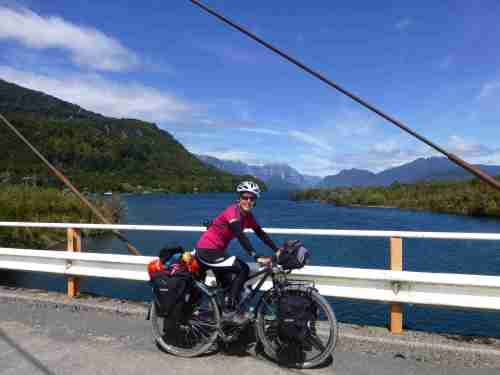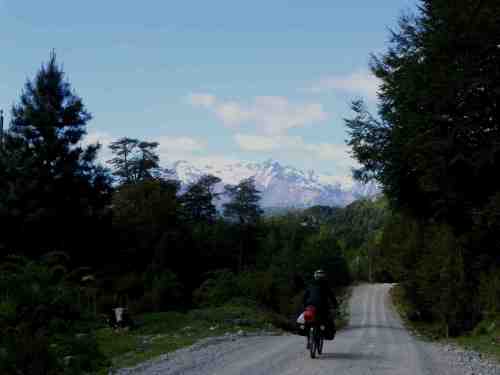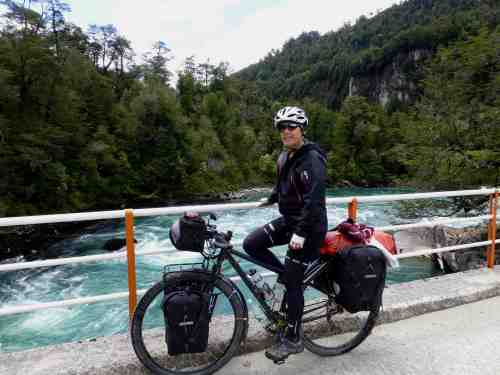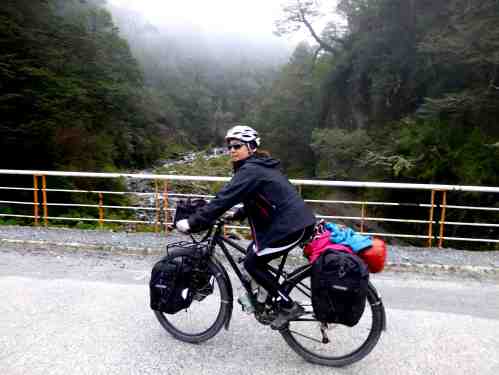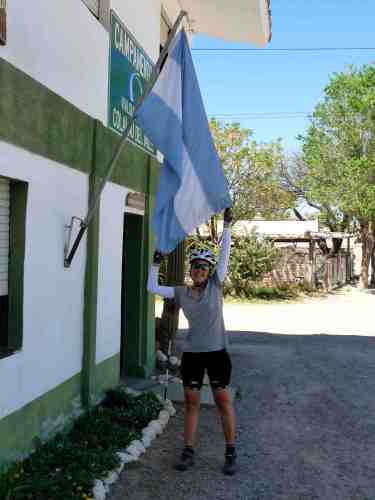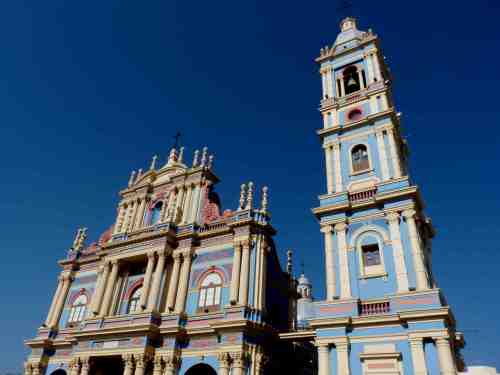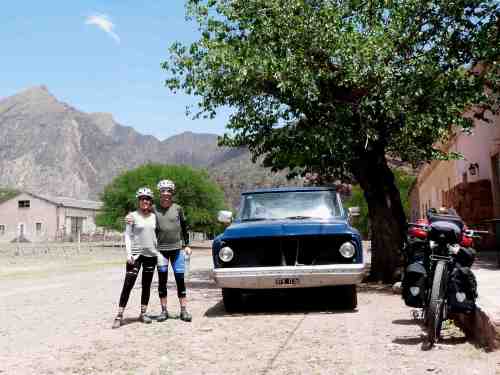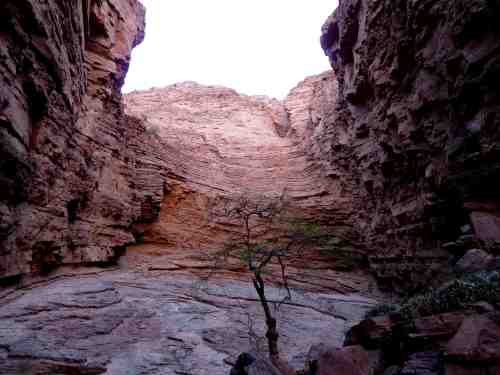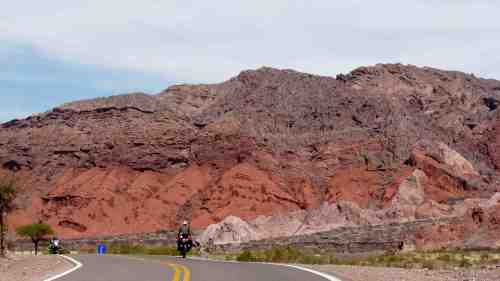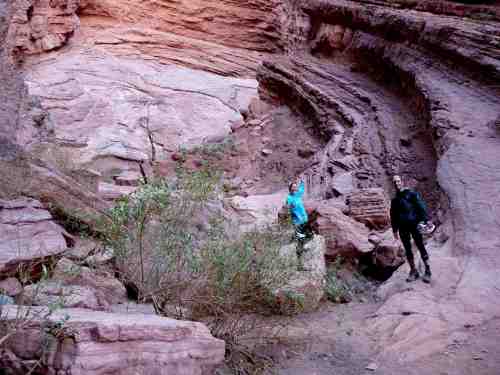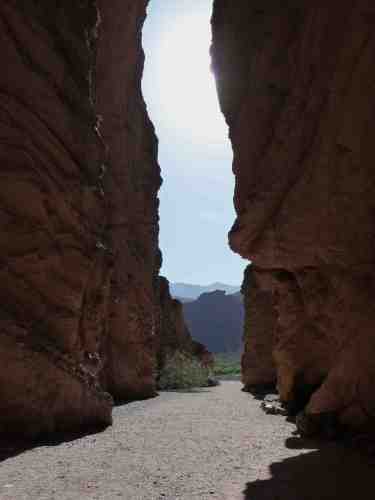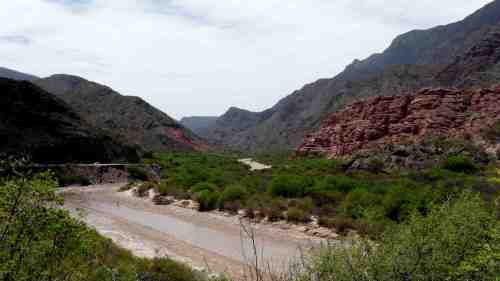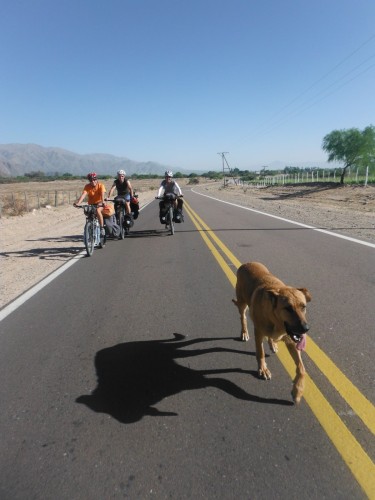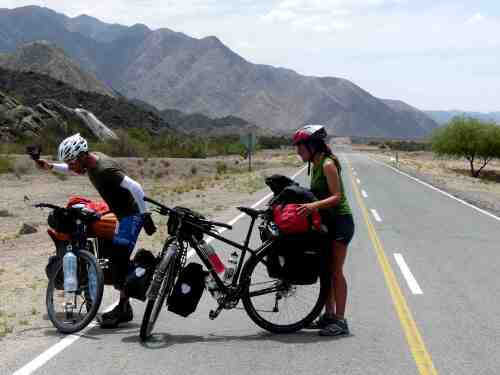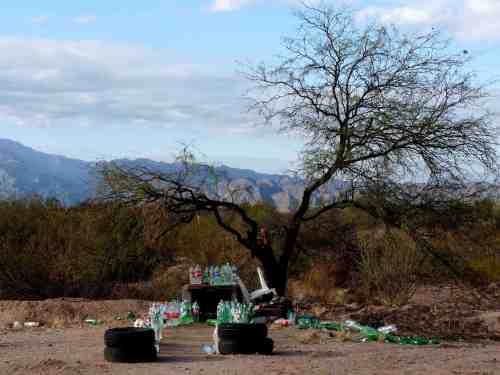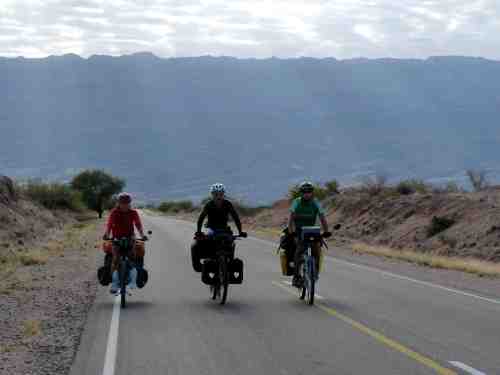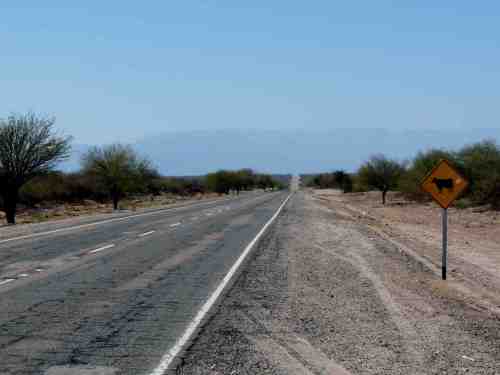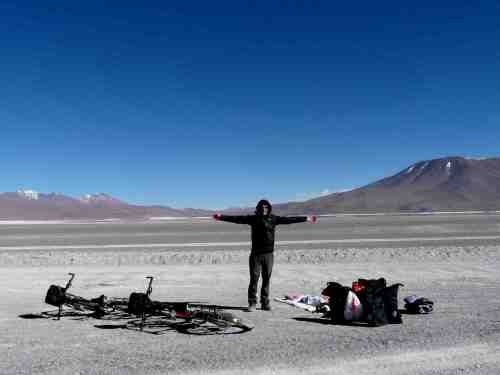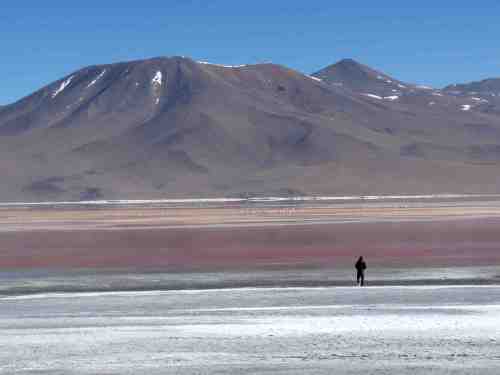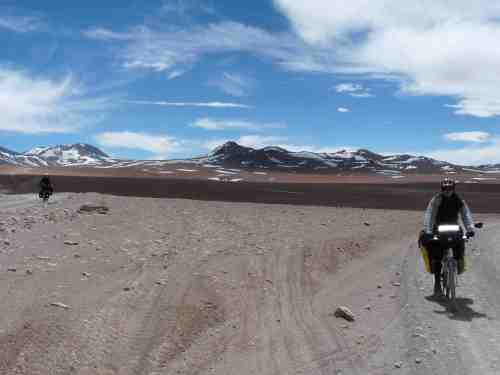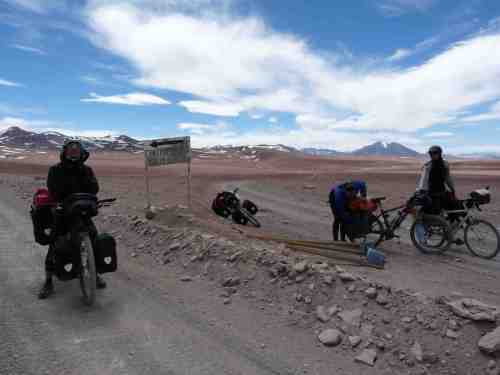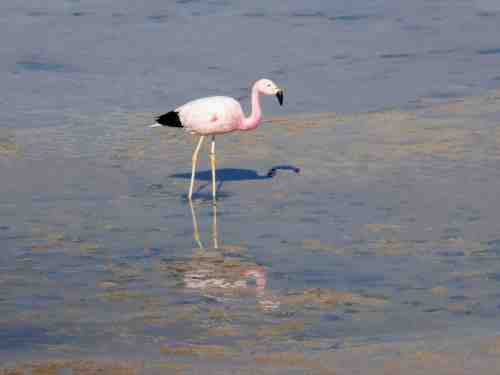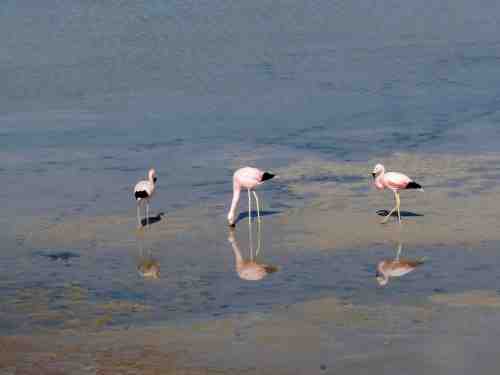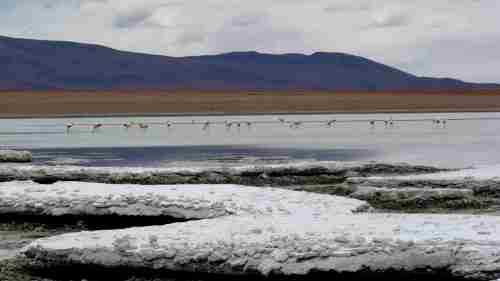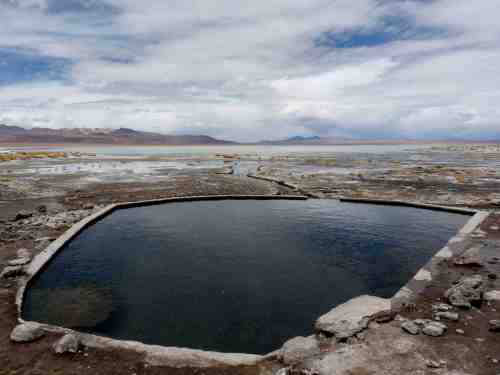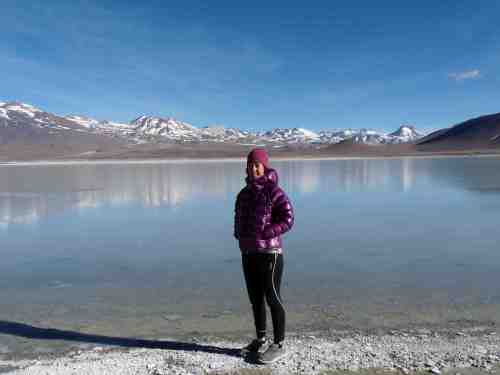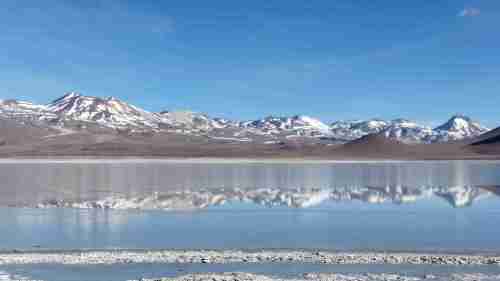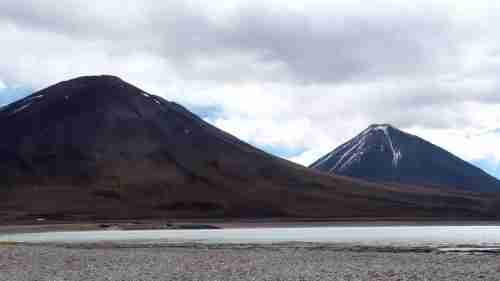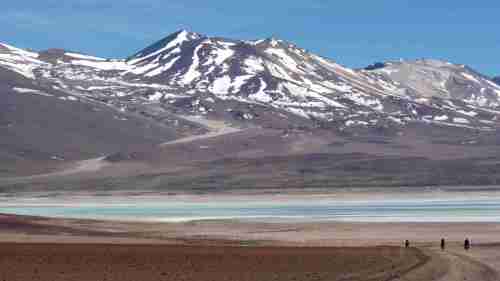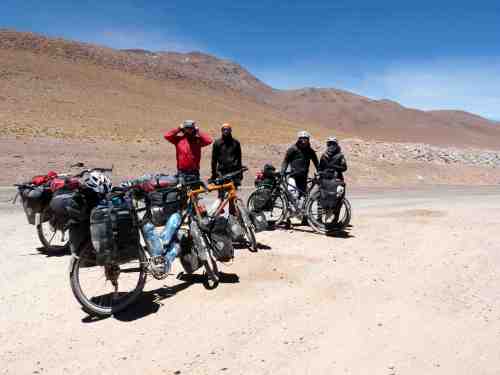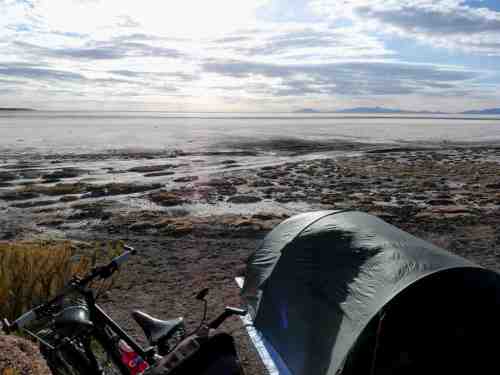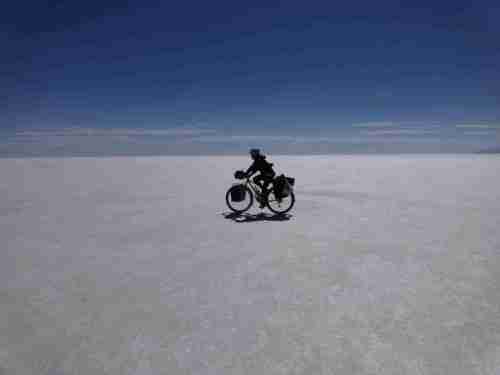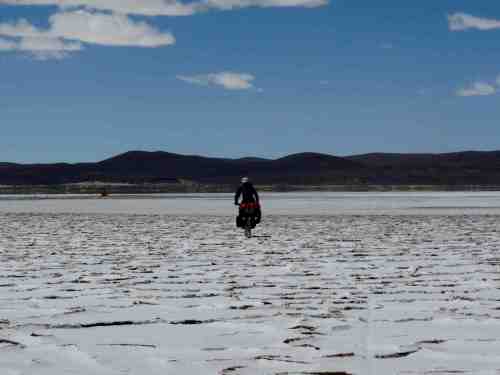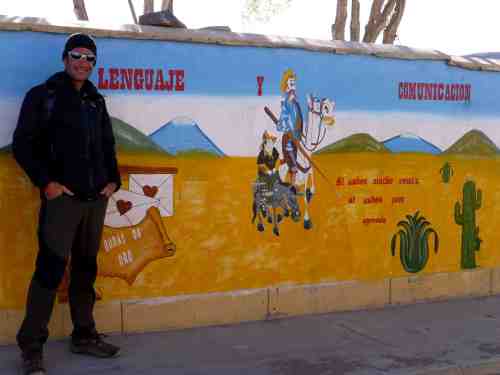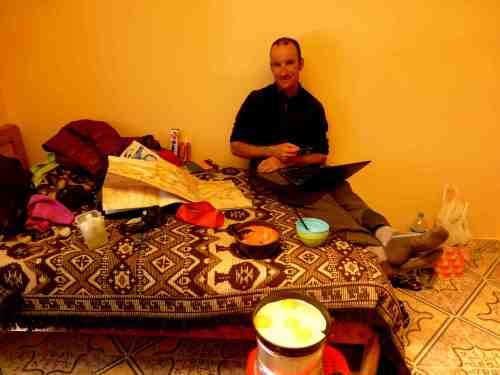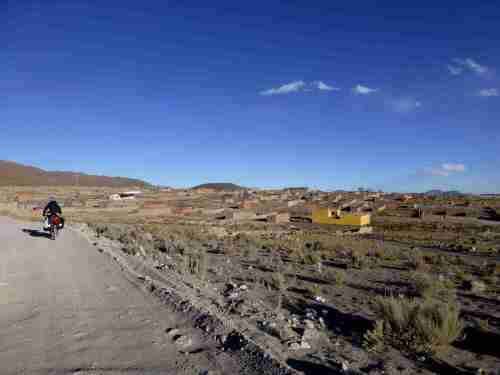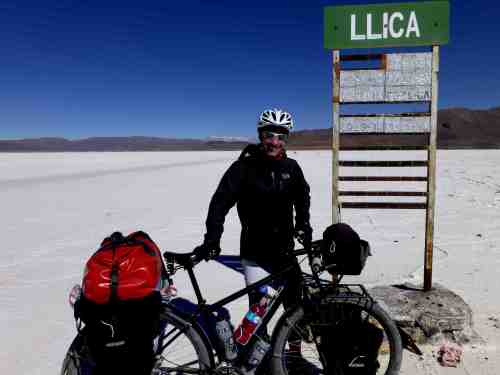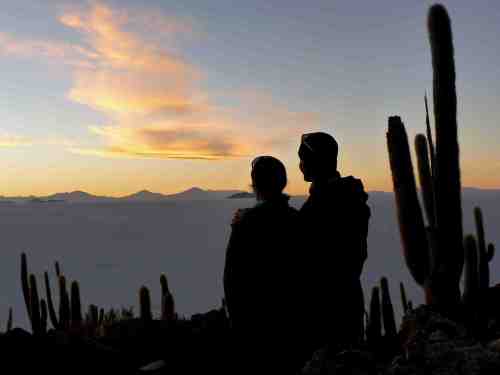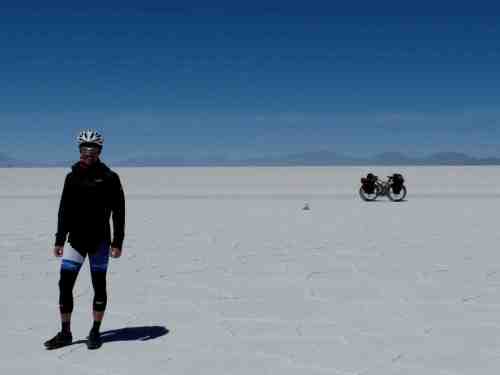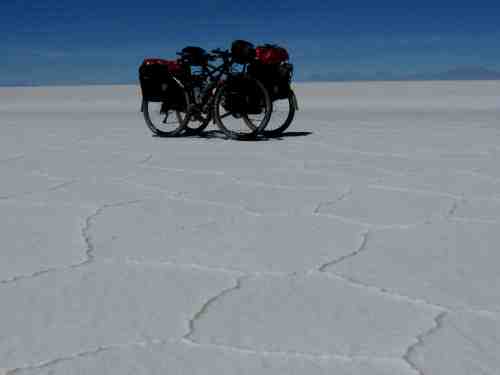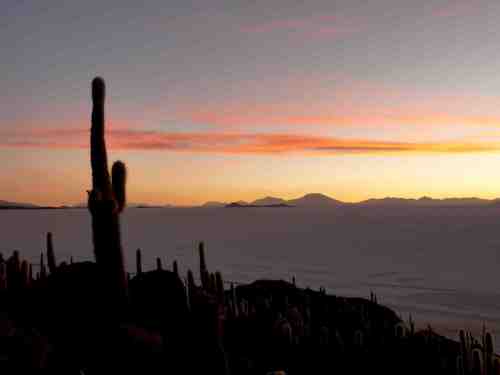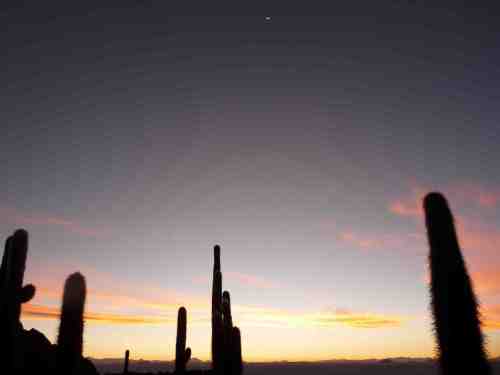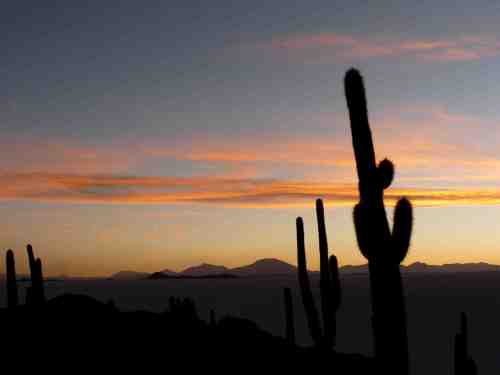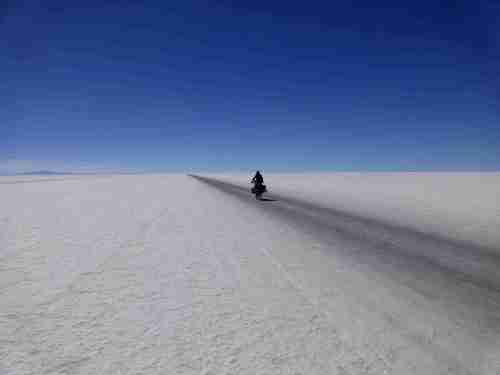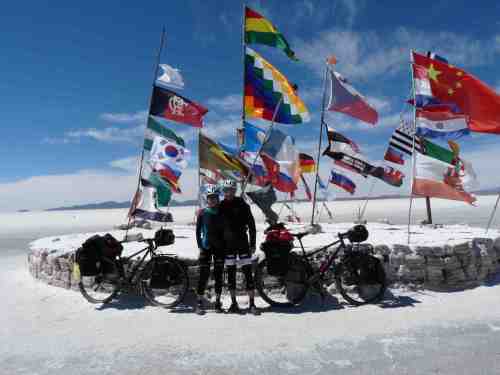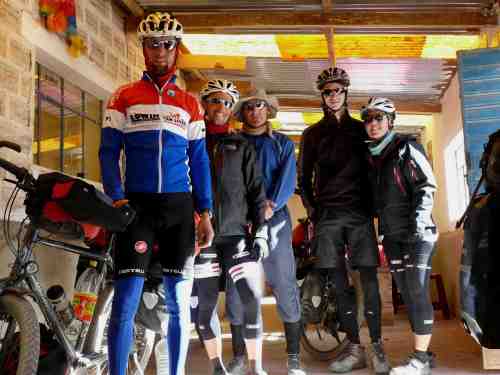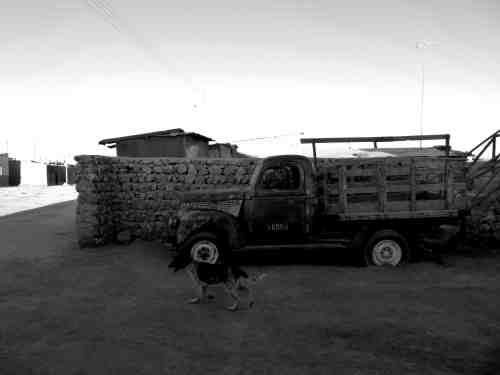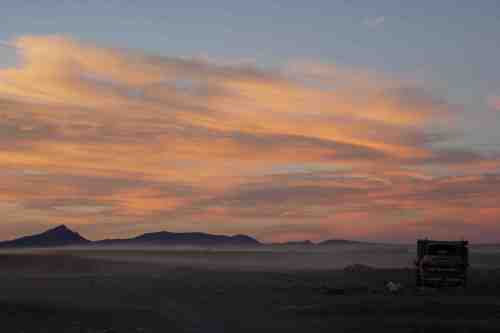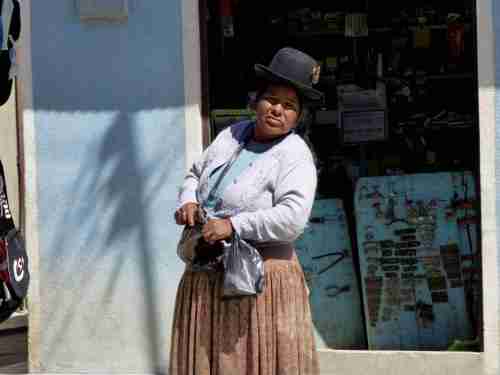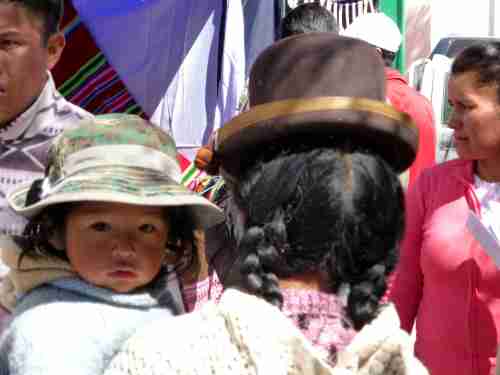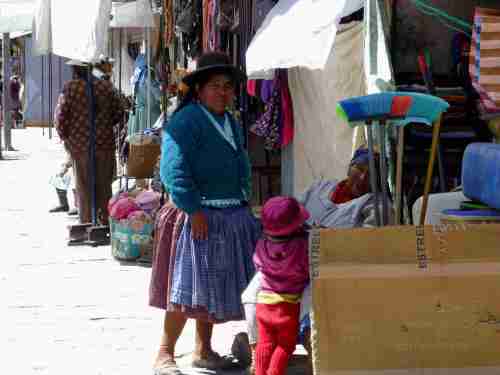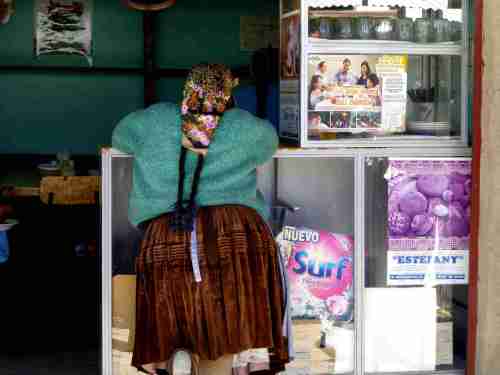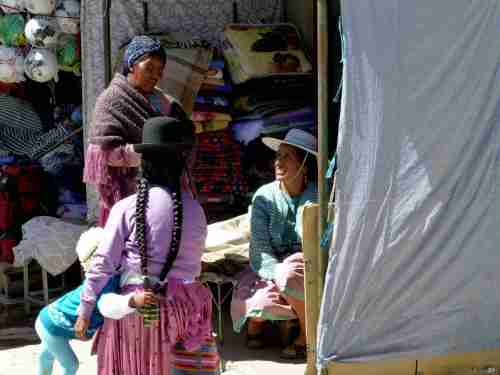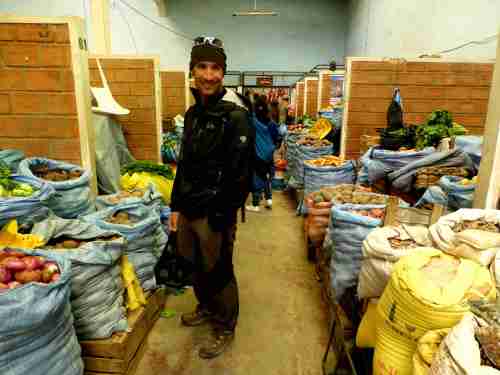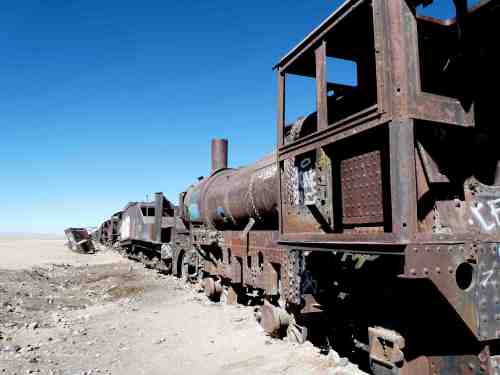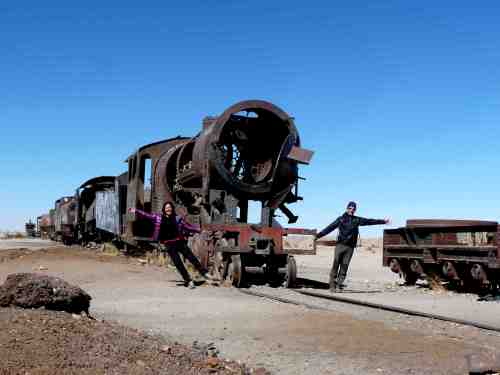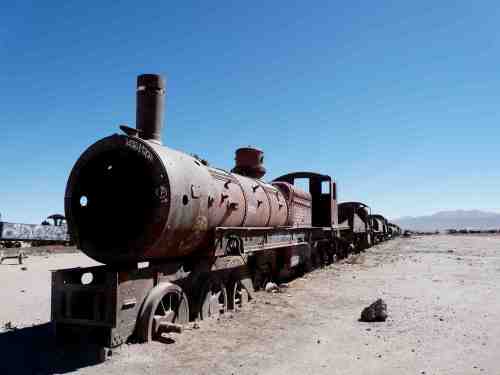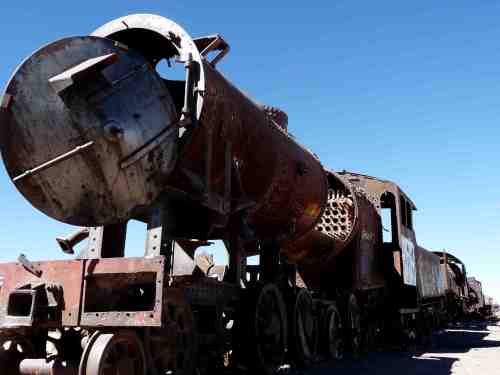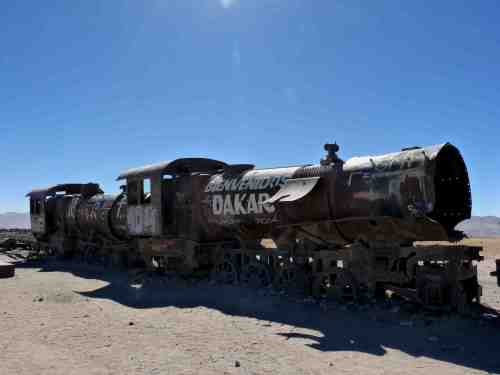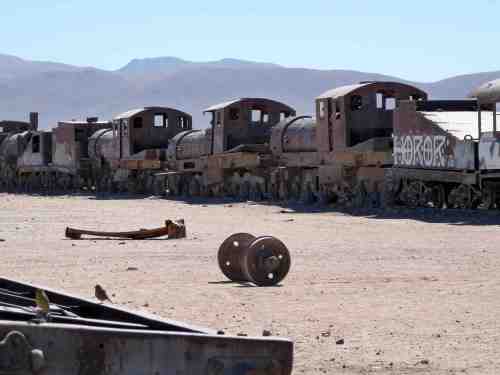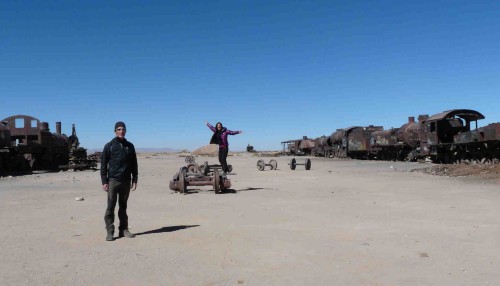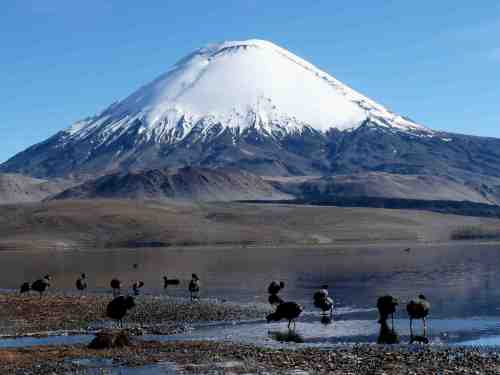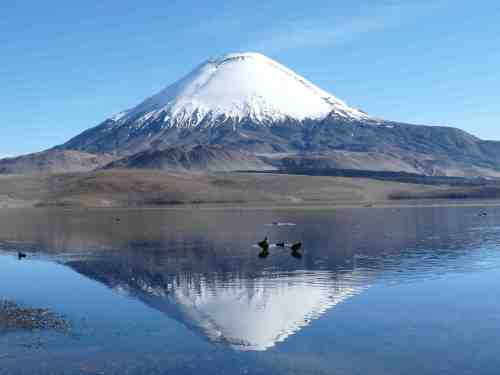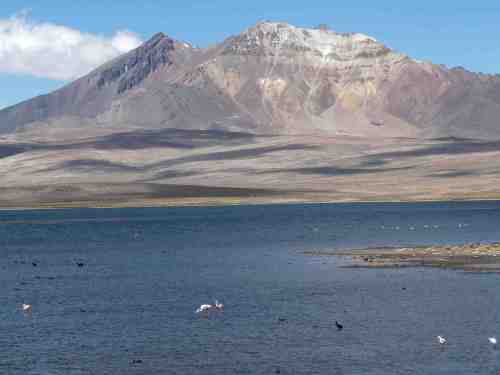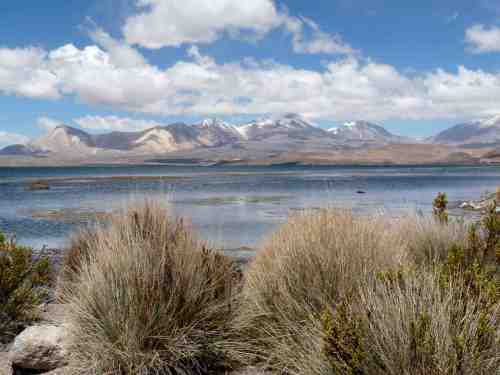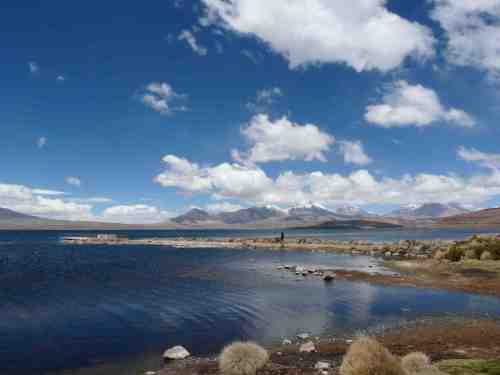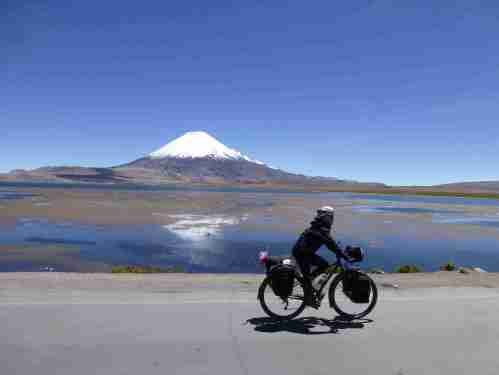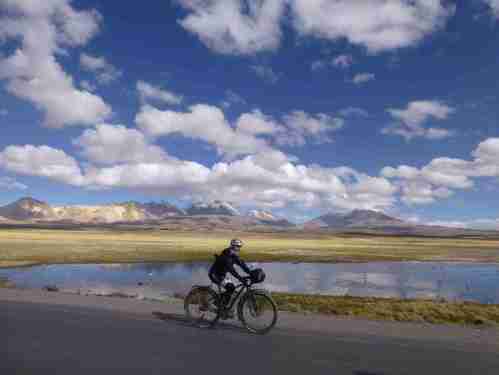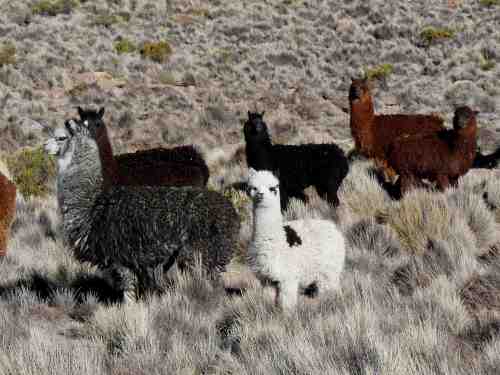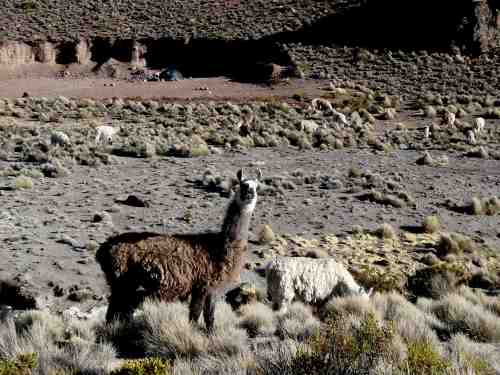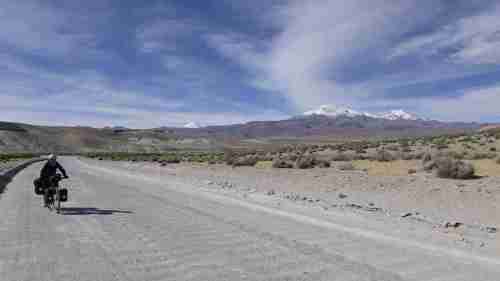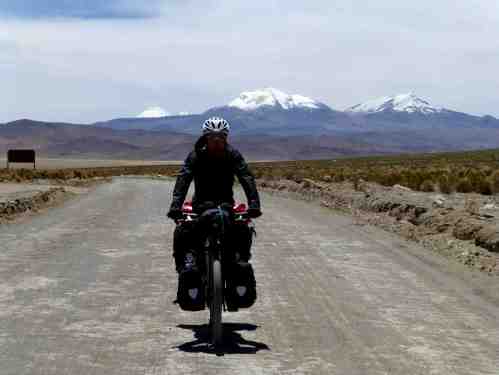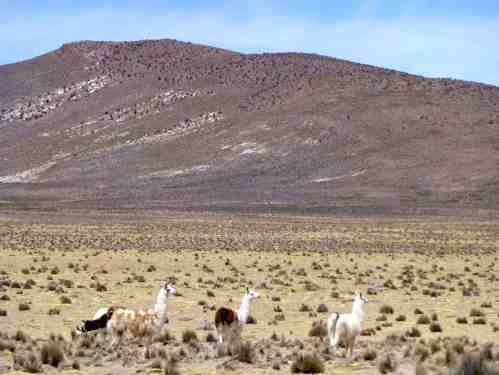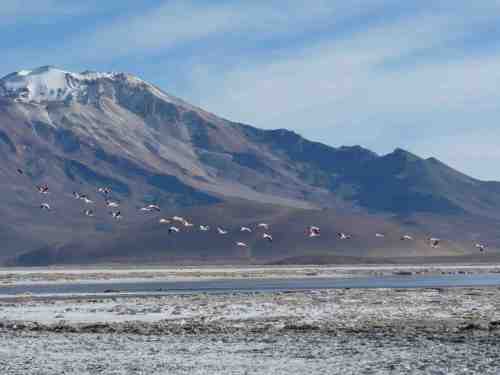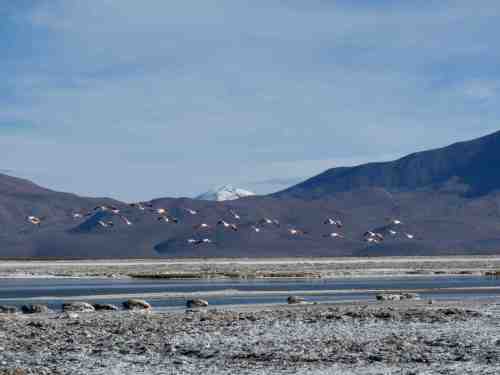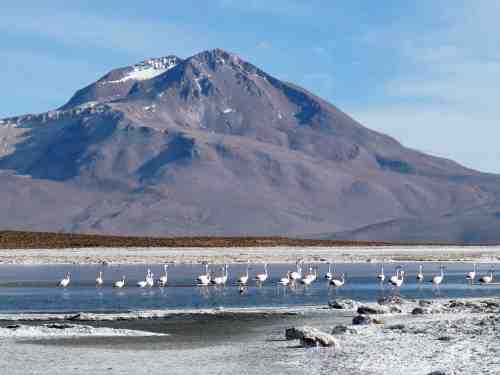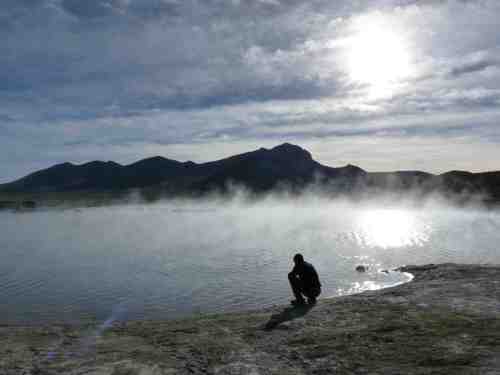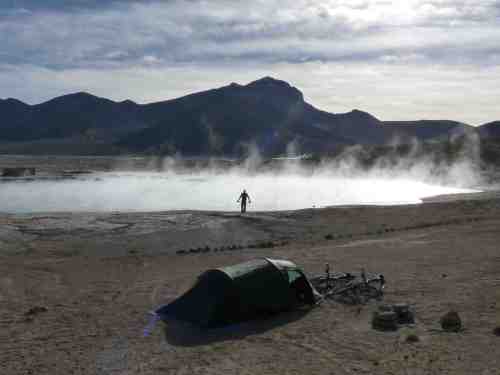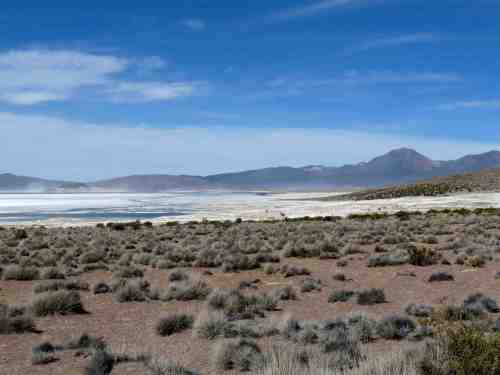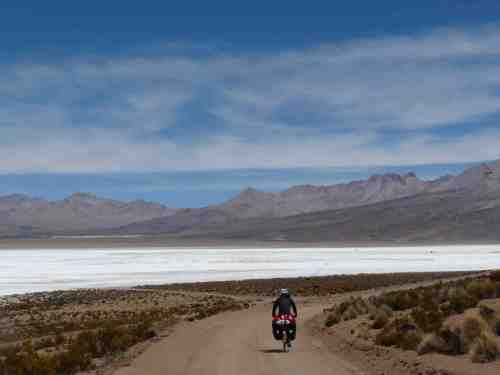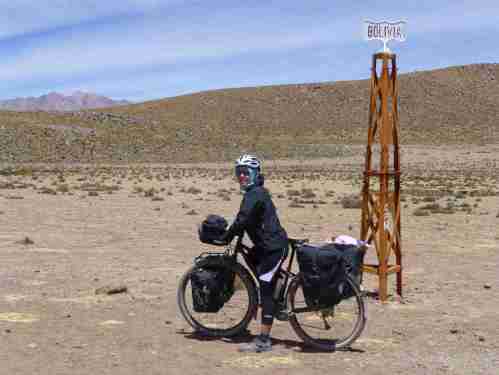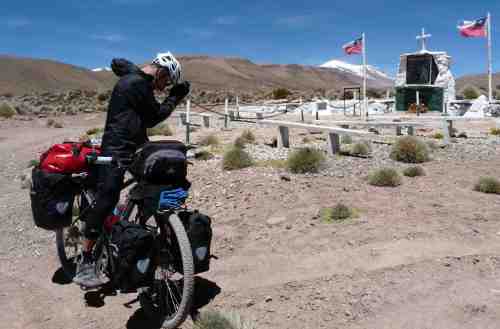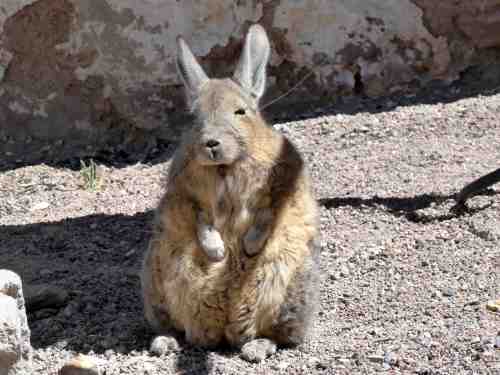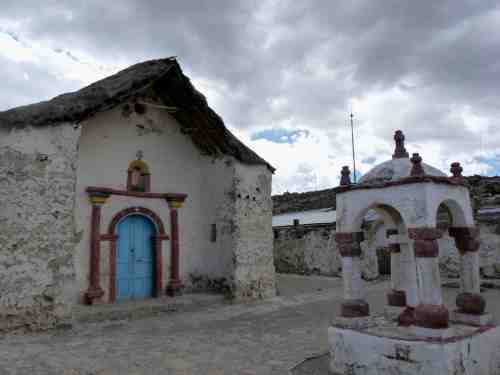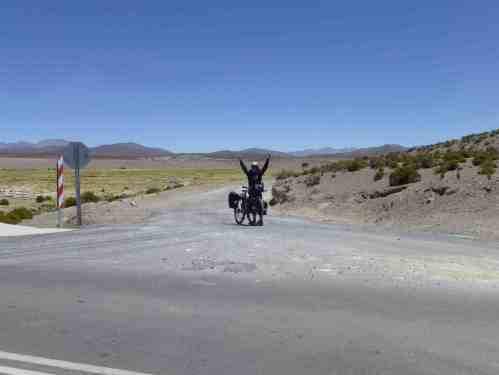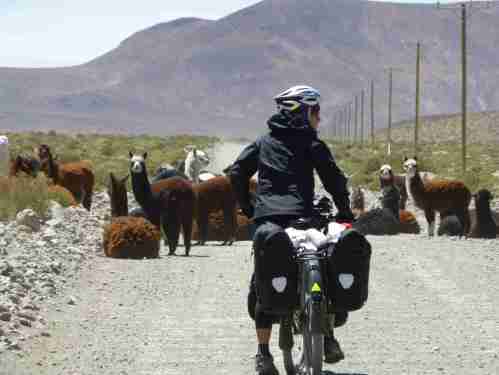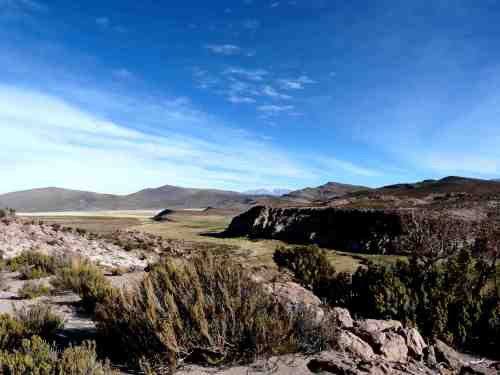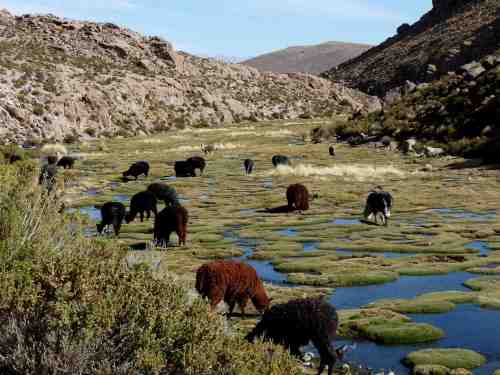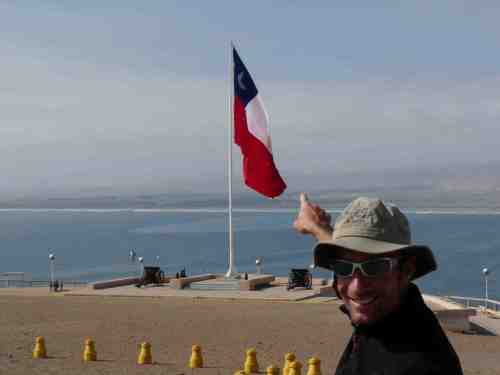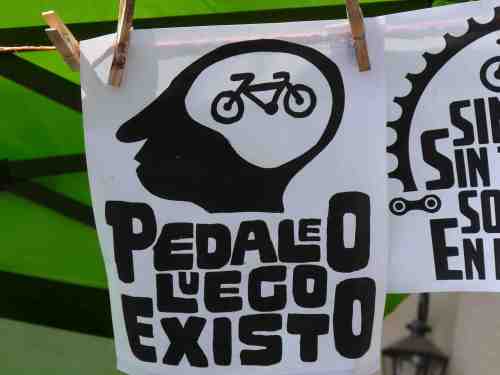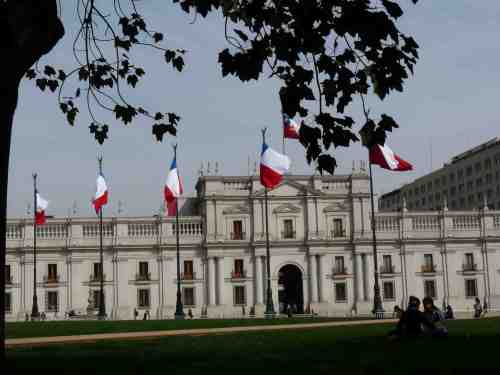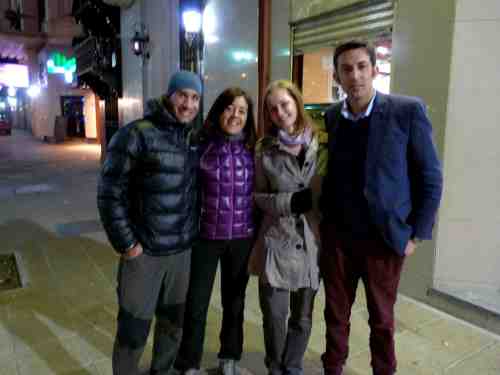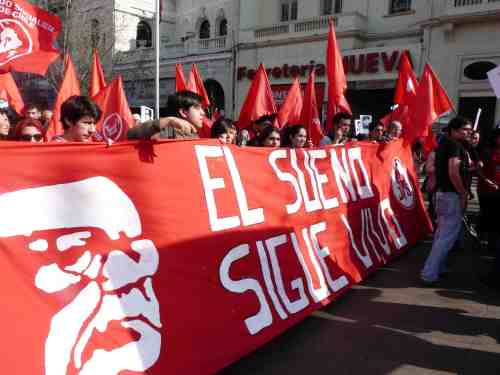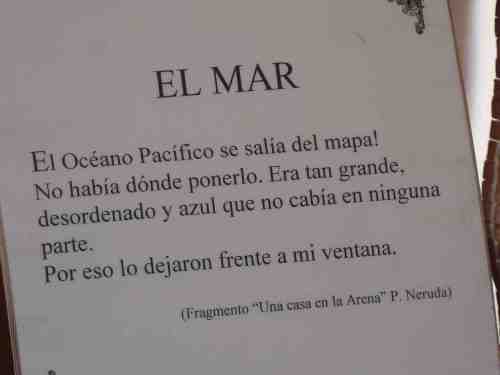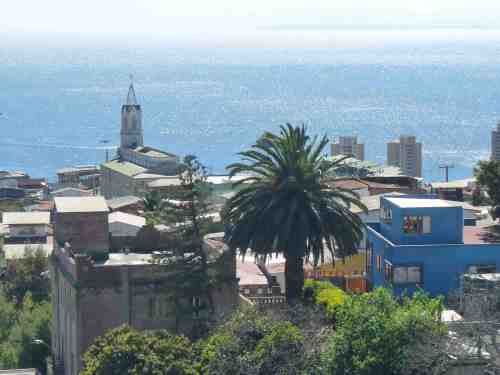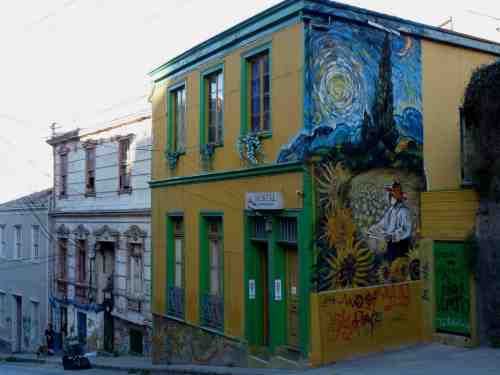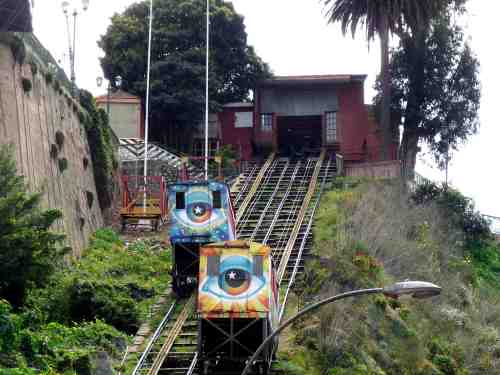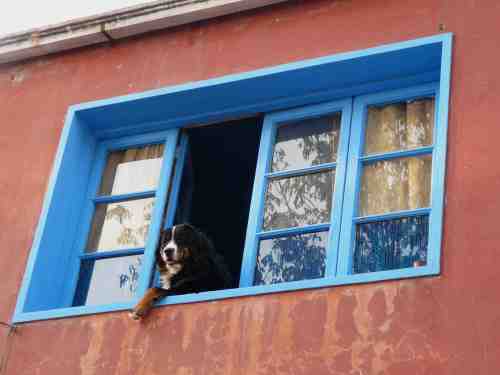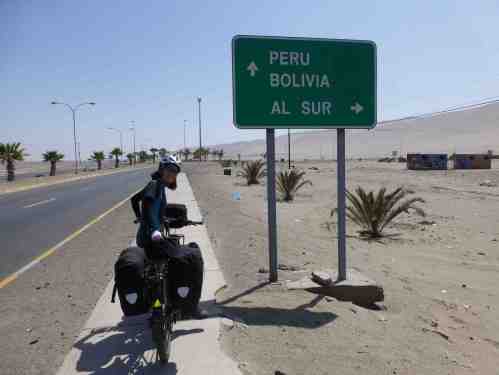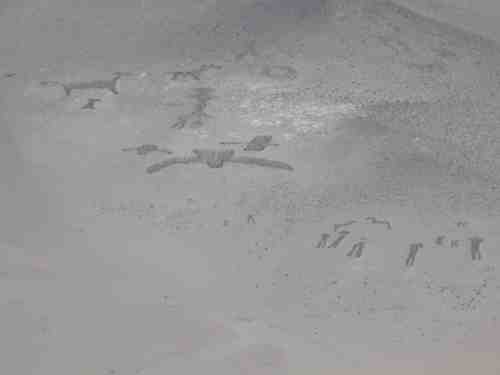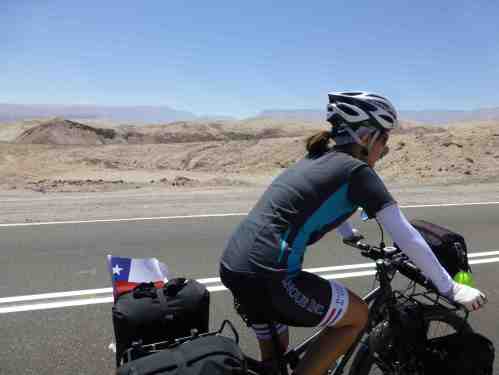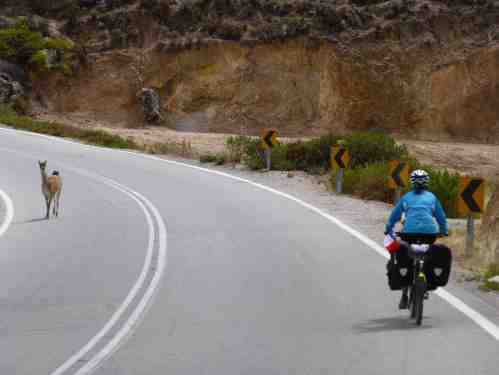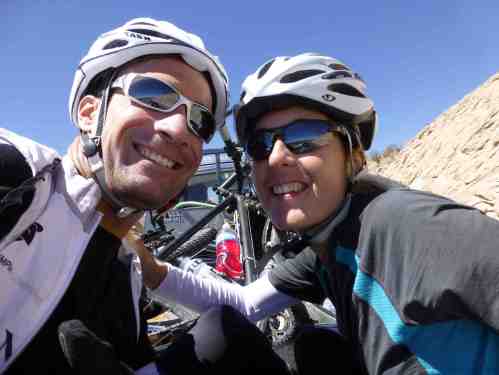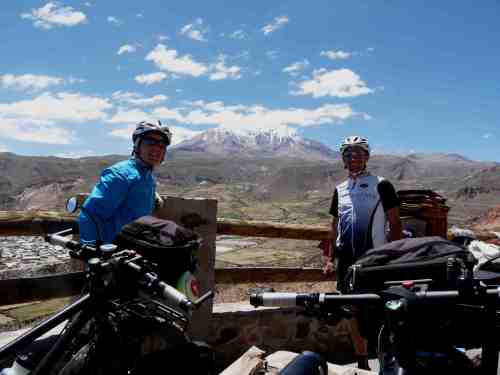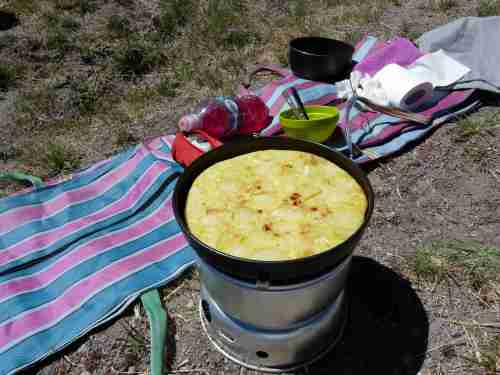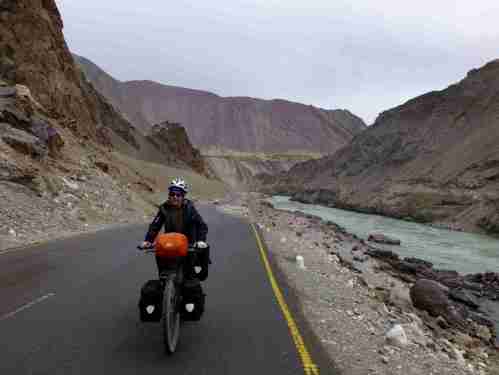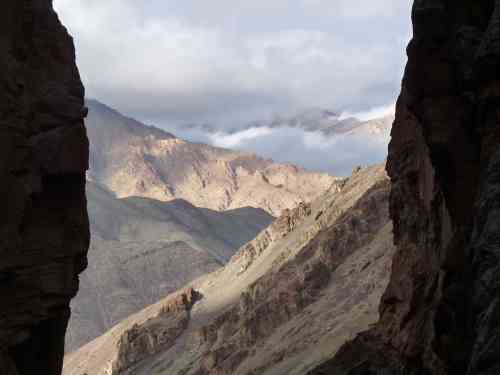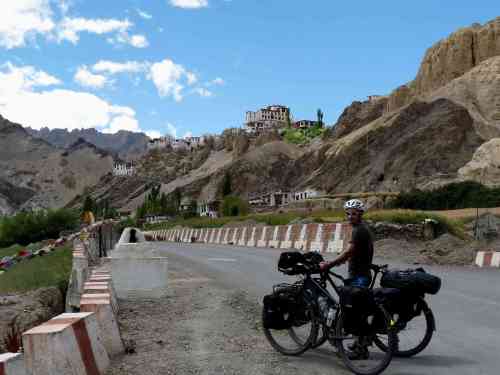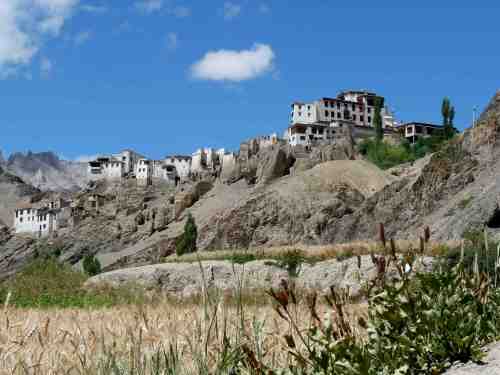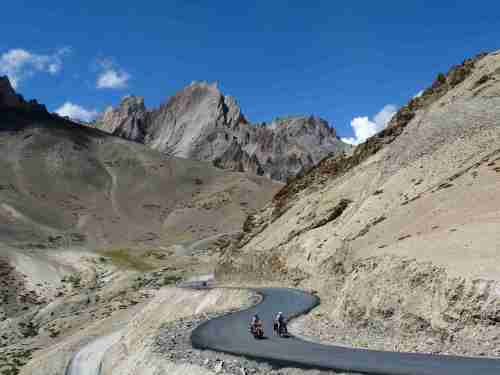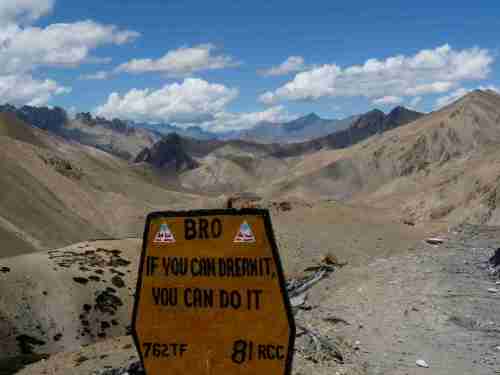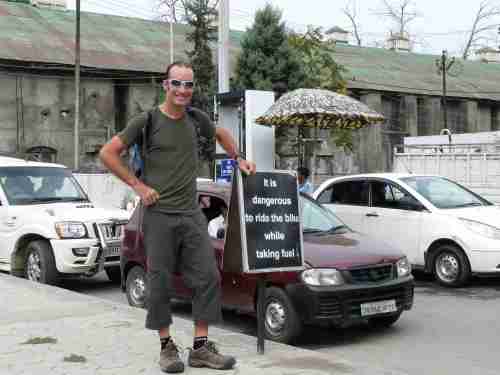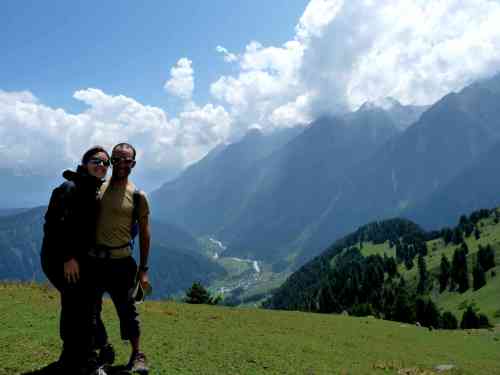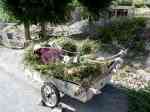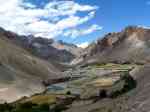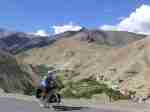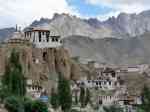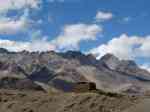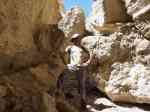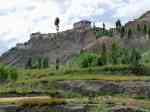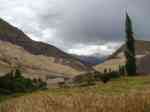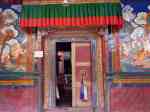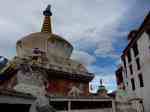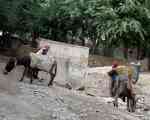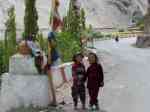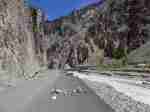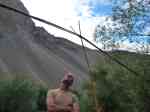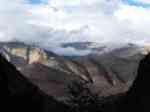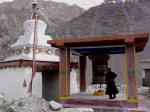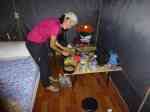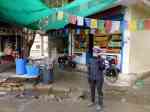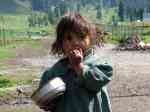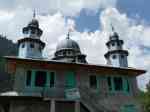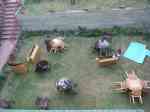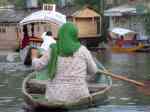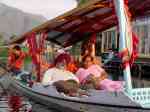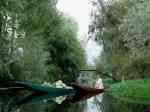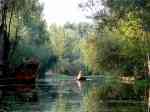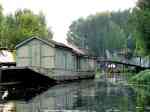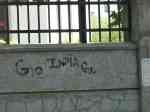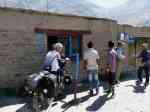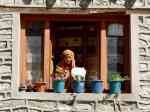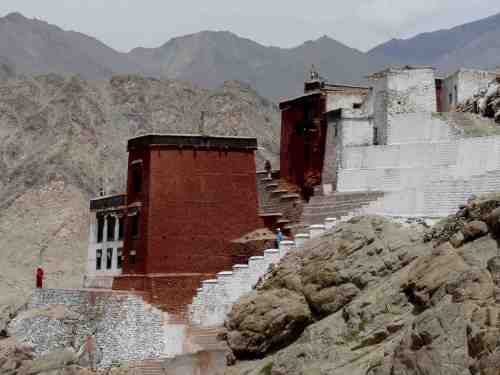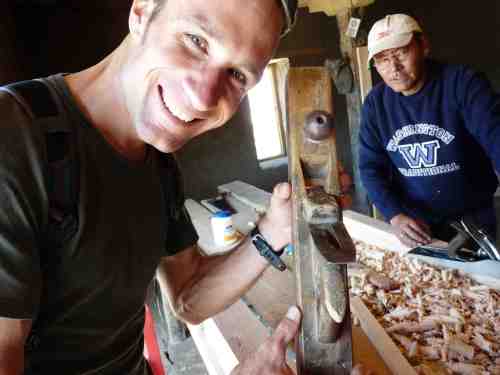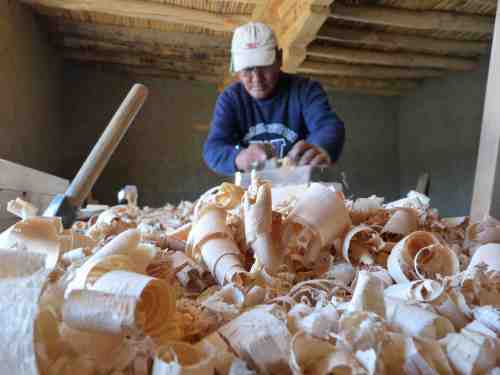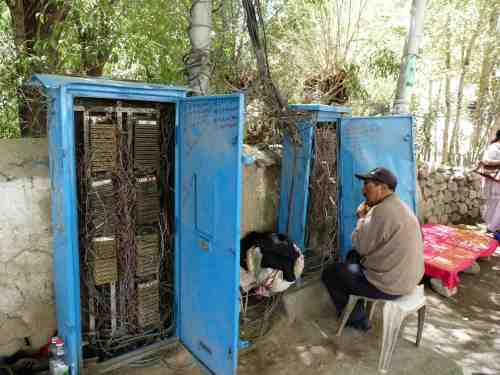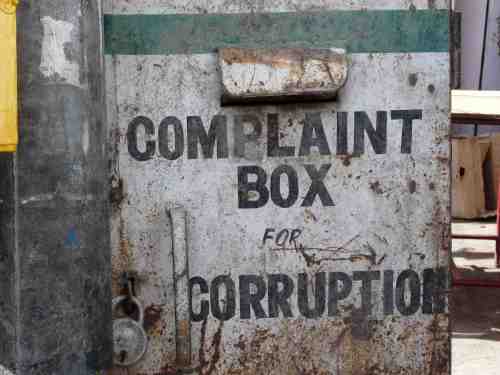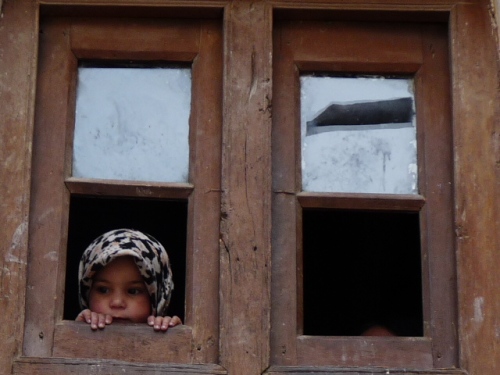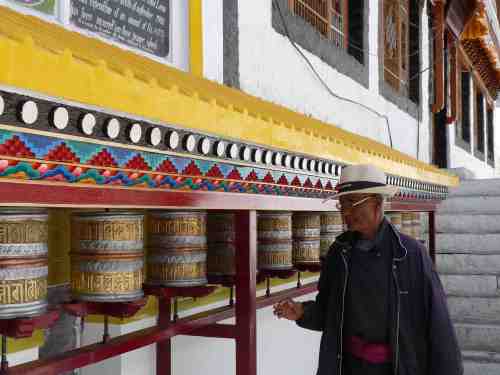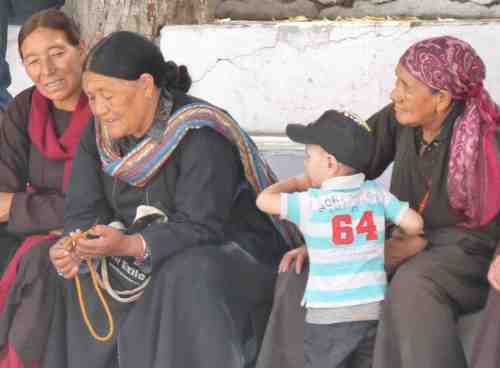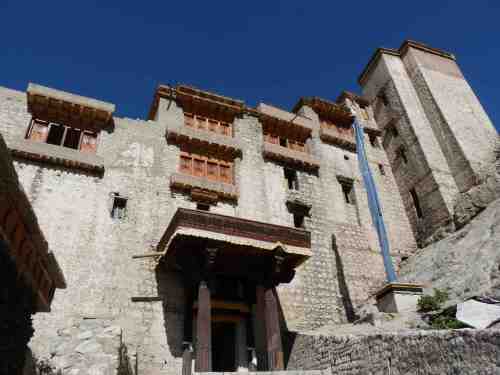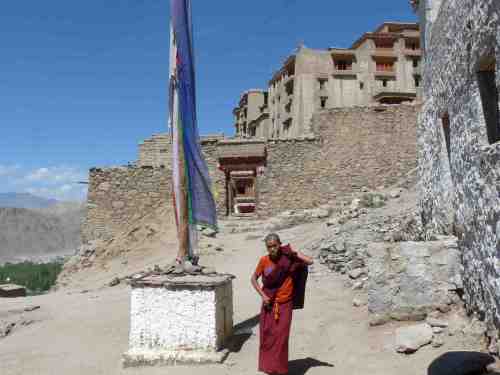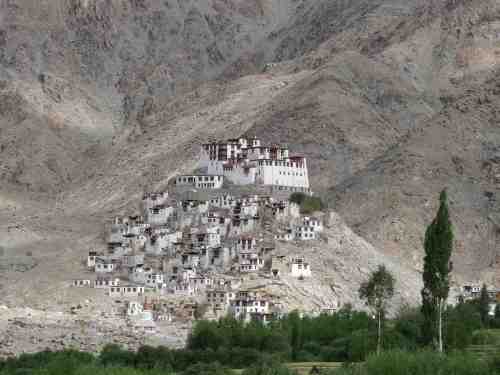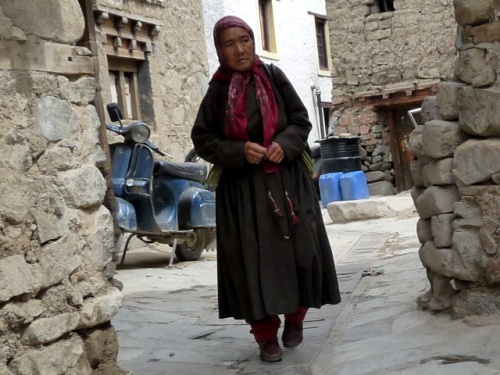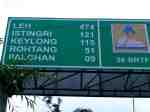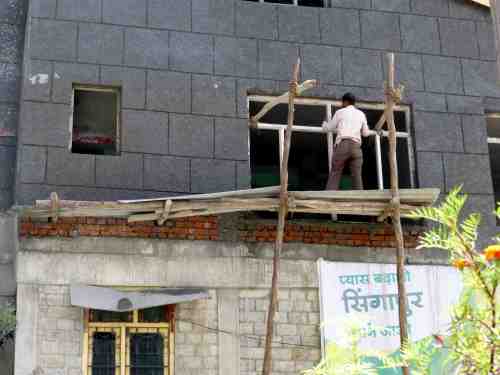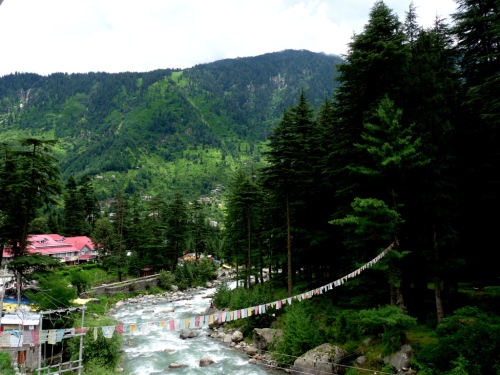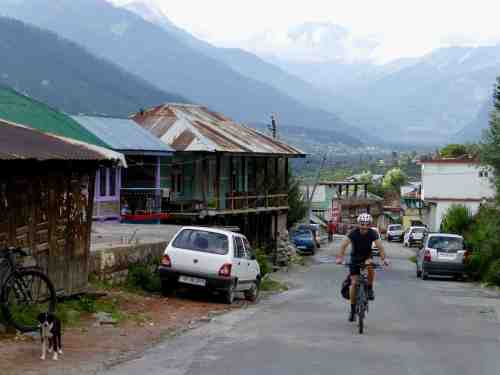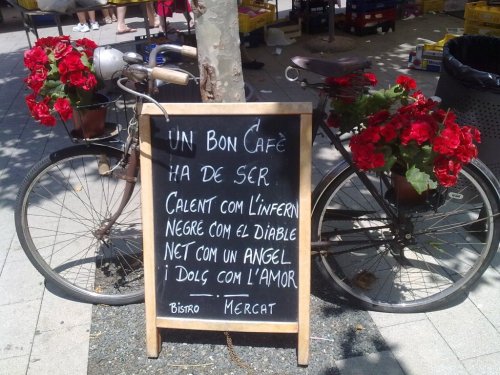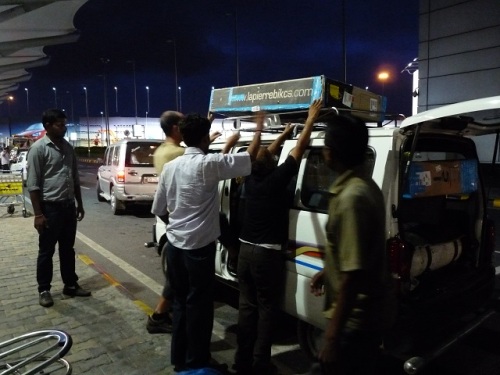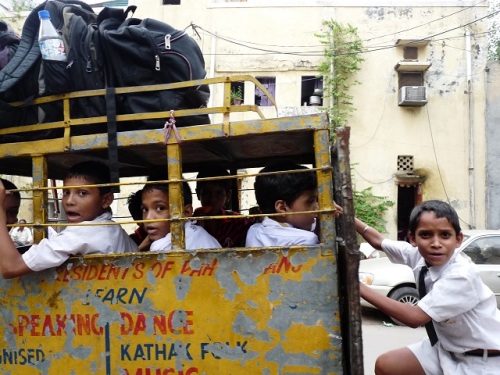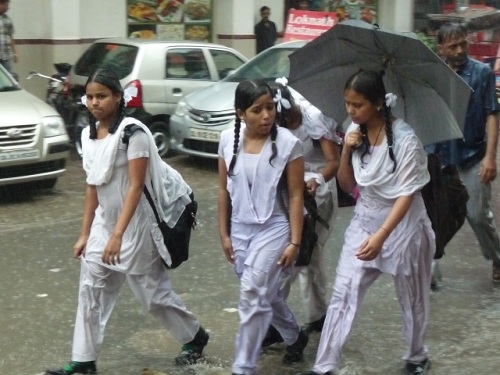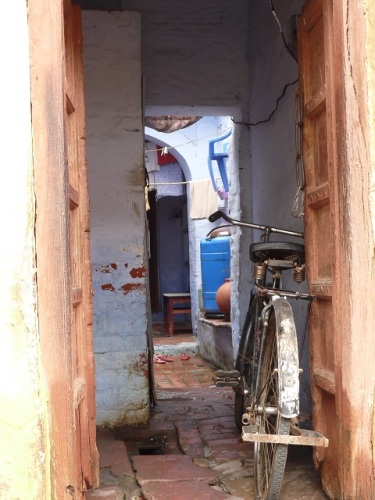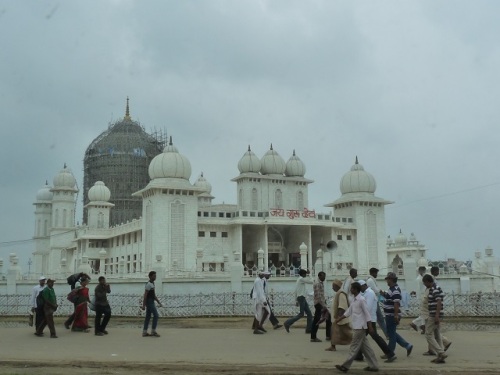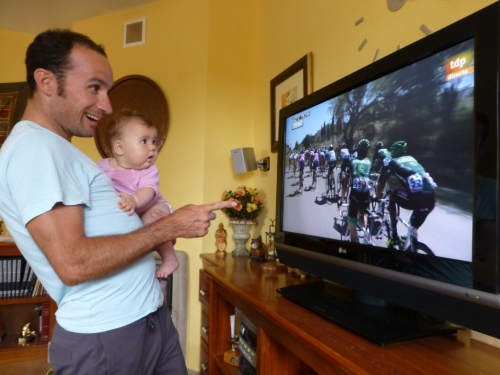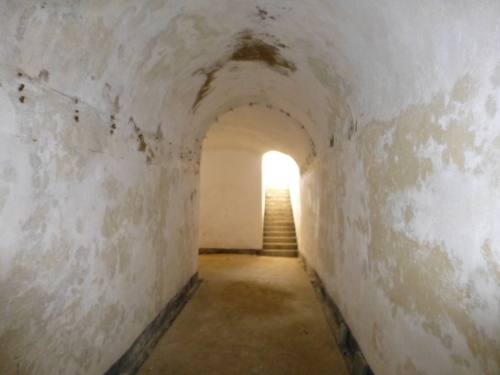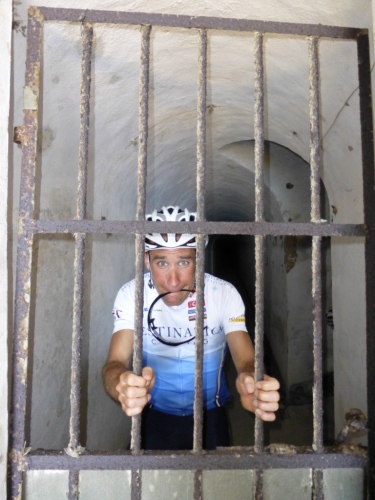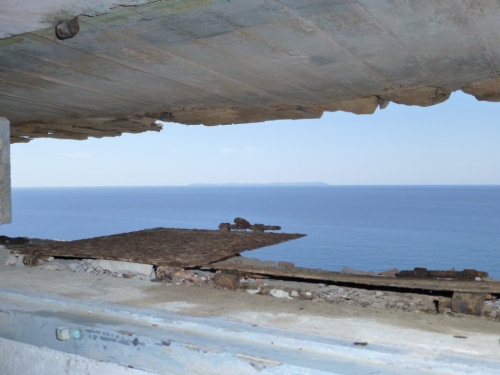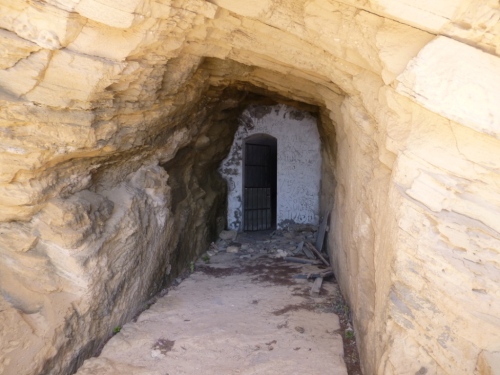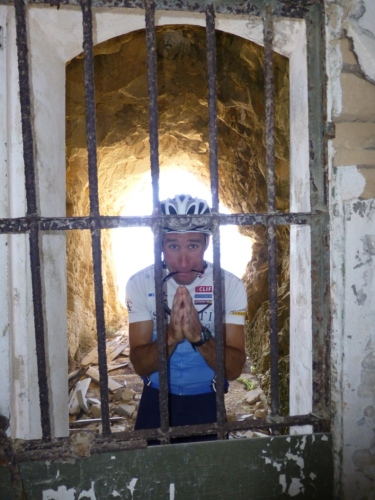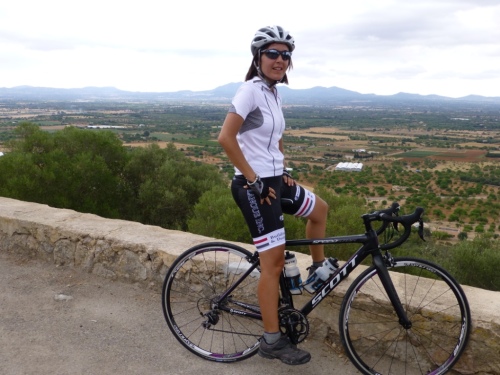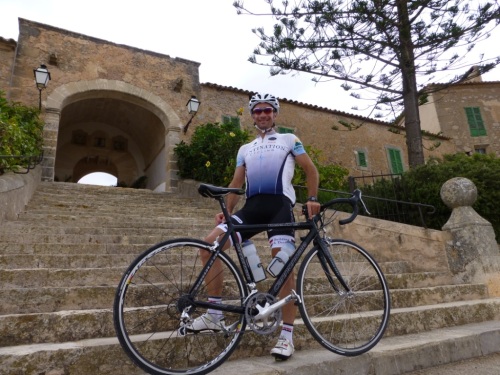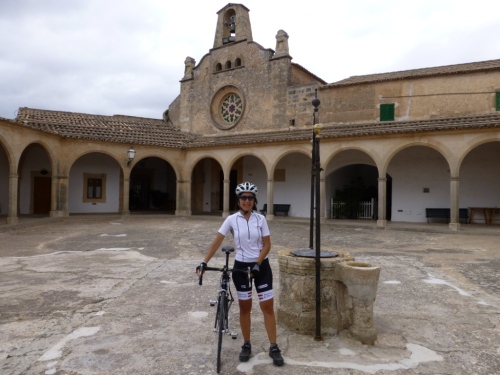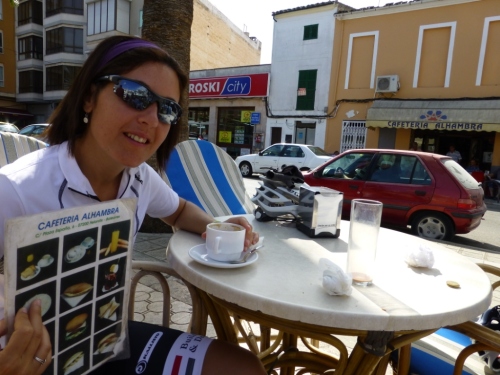And there we were, on the last leg of our adventure. After priming our legs in El Chaltén, we decided that we would try to conquer the mother of all national parks: Torres Del Paine. It was not so much the 5 day hike, nor the weather, nor the topography that had us terrified…it was the cost and the tourists that scared us to death!
We arranged this in El Calafate on the Argentinian side and found a way to get down to Puerto Natales in Chile (agaaaain we had to cross the border). From there we took a ride up to the park entrance. A series of buses, boats and entry fees and deliberations finally got us to the trailhead. This turned out to be a windy affair (very typical in Southern Patagonia), and the scars of the huge forest fire started by a young Isreali tourist were still very visible. He must have burned down half the park! Needless to say, the Chileans were not impressed.
Y allí estábamos en nuestra última aventura a pie. Después de preparar nuestras piernas en El Chaltén, decidimos conquistar la madre del cordero de todos los parques nacionales: Torres del Paine. No fueron los cinco días de monte, ni el clima, ni la topografía lo que nos aterrorizaba… sino los costes y los turistas!
Nos organizamos en El Calafate en el lado argentino, algo alejado de la entrada al parque en Puerto Natales, del lado chileno (ooootra vez a cruzar la frontera!). Desde Puerto Natales tomamos un bus hasta la entrada. Después de buses, barcos y tickets por fin divisamos el comienzo de nuestra ruta. Se convirtió en un asunto muy ventoso (característica muy típica del sur patagónico), en donde aún se podían ver las cicatrices de un inmenso incendio que provocó torpemente un joven israelí. Casi quemó medio parque! Digamos que los chilenos no se sorprendieron ante dicho incendio.
If you can put aside the tourists, the sub-par facilities and the cost, Torres del Paine is a great place. The polar opposite of its Argentinian counterpart, here you pay (and pay alot) for everything. El Chalten seemed much more authentic for us, with basic camps but more than enough to get some rest and face the following hiking days. In Torres del Paine it was very surprising to find oneself suddenly in front of a luxury resort, complete with restaurant, hotel, guide, horses, sherpas and even the ability to reserve your own tent space in the middle of the Patagonian countryside. Even selecting the most economic options (your own tent, food, etc.), 5 days cost us more than 400USD$$ in entries and fees of all types (versus 0$ on the Argentinian side). Although we never saw the full Torres due to the clouds, we did see plenty of other nice things. It was 5 days of pretty good hiking with a heavy pack, which, for our cycling legs, was not so easy. I think we would have been pretty sore if we had not hiked in El Chaltén prior to coming to Torres del Paine.
Si uno pudiera olvidarse de las ordas de turistas, las instalaciones mediocres y el coste…, Torres del Paine es un lugar fantástico. En gran contraposición a su parque homólogo argentino, aquí se paga (y mucho) por todo. El Chaltén nos pareció más auténtico, con campamentos básicos pero más que suficientes para descansar y afrontar los días siguientes de caminata. En Torres del Paine resultaba muy sorprendente encontrarse de pronto con un resort de lujo, con servicio de restaurante, hotel, guía, caballos, porteadores, e incluso reserva de lugar para plantar tu tienda (!!!) en medio del campo patagónico. Aún usando la opción más económica (cargar nuestra tienda y comida y acampar en los campamentos obligatorios “sin extras”), 5 días de excursión nos costó unos 400 $ en entradas y cuotas de todo tipo (versus 0 $ en Argentina!!). Resultaron 5 días de buenas excursiones con la mochila acuestas lo cual, para nuestras piernas ciclistas, no eran tan fácil! Menos mal que los días en El Chaltén nos sirvieron de entrenamiento para lo que se nos venía!
There are basically two routes in Torres del Paine, the W and the O (called like this due to their basic shape on the map) (more info: http://www.torres-del-paine.org/). The O route is longer, 9 to 10 days, and includes the W plus another part that is much less traveled which they told us really was worth doing. In our case we were not prepared to bring so many supplies for so many days so we opted for the W.
As our first day was cloudy and we wouldn’t be able to see the Torres, we started the W from the Refugio Paine Grande, so we took a boat over there to start the hike to the glacier and camp Grey.
Existen básicamente dos rutas en Torres del Paine, la W y la O (por el recorrido que trazas en el mapa al hacerlas) (Más info en http://www.torres-del-paine.org/). La ruta O es la más larga (9 o 10 días), incluye la W más otro tramo mucho menos transitado que nos han dicho que merece muchísimo la pena. En nuestro caso no nos vimos preparados para cargar víveres para tantos días y optamos por la W.
Como nuestro primer día amaneció nublado y no se podían ver las torres nos recomendaron empezar la W desde el Refugio Paine Grande, así que tomamos un barco hacia allí para comenzar nuestra caminata hacia el glaciar y campamento Grey.
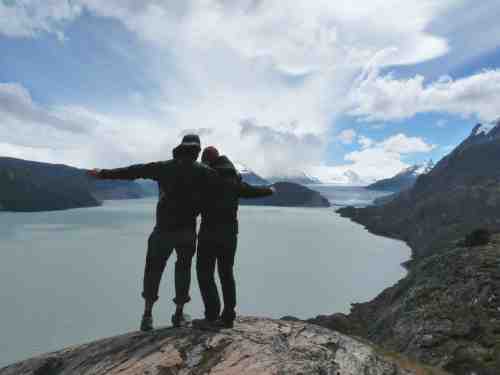
Cómo girarse y posar para una foto sin salir volando (i). / How to turn around for the photo without getting blown away
On the second day we retraced our steps back to the Paine Grande camp and head to the Italian camp to sleep for the night. The wind and the sun were with us the whole day, although in this area the climate changes so quickly that we always carried with us stuff for the rain.
En el segundo día deshicimos nuestros pasos de vuelta al campamento de Paine Grande y seguimos con el objetivo de llegar al campamento Italiano para dormir. El sol y el viento nos acompañaron durante todo el día aunque en esta zona el clima cambia tan rápido que siempre llevábamos a mano nuestros chubasqueros.
The following morning the fog came, but we left our backpacks in the camp and headed towards French valley to see the horns and the French glacier, only to retrace our steps later in the day, pick up the backpacks and move to the Camp of the Cuernos (Horny camp? Sounds funny to us!). You don’t want to show up there too late…the places fills up fast and you can find yourself with nowhere to sleep!
A la mañana siguiente la niebla nos acompañó en nuestra ruta (sin mochilas!!) hacia el valle Francés, ahí pudimos entrever los Cuernos y el glaciar del Francés para después deshacer nuestros pasos, recoger las mochilas y mudarnos al campamento Cuernos (cuidado con llegar tarde aquí, hay poquísimos sitios para acampar y la competencia es feroz!).
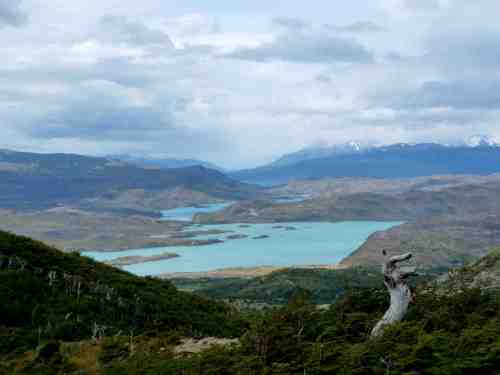
Lago Nordenskjöld
The following day, perhaps the least spectacular of all, we headed towards the Chilean camp. This route is the most heavily trafficked due to the people who come only for the day to do the hike to see only the Torres. We decided to camp there because this would allow us to hike to the Torres the following morning without the backpacks, seeing as we had to descend on the same route. Other early risers opted to sleep in the Torres campo as they could travel to base camp in the morning, even though they can get frozen in midway up. We decided to not climb so much that day, which was a good thing because the following morning was cloudy and from the base camp neither we nor the early risers got to see the famous Torres!
En la siguiente etapa, quizás la menos espectacular de todas, llegamos hacia el campamento Chileno. Esta ruta está más transitada (aún) que el resto porque hay gente que solo hace el último segmento en una excursión de un día desde la hostería Las Torres hasta el campo base de las Torres. Decidimos acampar ahí porque eso nos permitía hacer el ascenso al campo base a la mañana siguiente frescos y sin mochilas, ya que volveríamos a pasar por ahí a la vuelta. Otra gente madrugadora opta por dormir en el campamento Torres porque así pueden ir a ver el amanecer al campo base, so pena de quedarse congelados en plena ascensión… Nosotros decidimos no subir tanto ese día, lo cual fue un acierto porque la mañana siguiente amaneció nublada y desde el campo base ni nosotros ni los madrugadores pudimos más que intuir las famosísimas Torres del Paine, una pena!
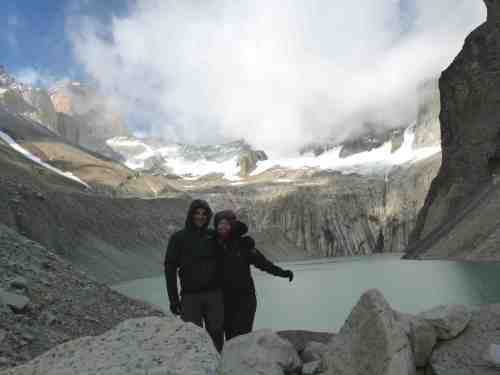
Esperando sin éxito a que despejara en el Ventisquero Torres, menudo frío! / Waiting without success for the Torres to clear up, freezing cold!

Y finalmente en la distancia las nubes nos dejan ver Las Torres del Paine! / And finally in the distance the clouds let us see the Torres del paine!
It was at once satisfying and unsatisfying. It was nice, yes. It was worth going to…but it sure wasn´t the most spectacular thing on our trip. Compared to the Salars in Bolivia and the parks in the north of Chile, Torres del Paine was a little bit of a let-down. Don´t get us wrong…it was a good time…but if you have to choose there are other quite beautiful things to see in Chile and Argentina at a fraction of the cost and far more authenticity!
El parque nos pareció agradable y no agradable a la vez. Es muy bonito por supuesto. Y mereció la pena ir… pero no creemos que fuera lo más espectacular del viaje. Comparado con los salares de Bolivia y los parques del norte de Chile, nos pareció un poco decepcionante. No nos malinterpretéis, estuvo muy bien… pero si tienes que elegir hay otros lugares preciosos que ver en Chile y Argentina muchísimo más económicos y mucho más auténticos!
Torres del Paine concluded the nature aspect of our South American Tour and we headed off to El Calafate to catch a flight back to Buenos Aires. 10 degrees to 35 degrees in only a 3 hour flight!
Torres del Paine fue nuestro final en cuanto a las excursiones en Sudamérica. Después nos dirigimos a El Calafate de nuevo para tomar un vuelo a Buenos Aires. De 10 a 35 ºC en tres horas de vuelo!
Before leaving we took advantage of being near the Perito Moreno glacier in El Calafate, another mecca which is worth visiting, despite the tourism. The amazing thing about this glacier is that it bucks the general trend of glaciers and it is growing each year. However, its growth is somewhat limited: there comes a moment when the front of the glacier gets to a stretch of shoreline with water to the left and the right. Ice starts to accumulate and then it blocks the natural waterway between the two bodies. This causes a wall of ice to form, damning the other lake, and the water level rises and rises until the day comes when it breaks the ice dam and forms the link again. The water flows out and the process starts all over again. That happens every 4 to 5 years. When we visited, there was still a long way to go, as the current ice had not even come to hit the land. It was a great place to say goodbye to the Patagonia we had spent so long exploring and which we would never forget!
Antes de partir aprovechamos para visitar el glaciar Perito Moreno en El Calafate, otra meca que a pesar del turismo merece la pena visitar. Lo excepcional de este glaciar es que en contra de la tendencia general, éste sigue creciendo cada año. Pero curiosamente su crecimiento está limitado: hay un momento en el que el frente del glaciar llega a un trozo de tierra firme con agua a izquierda y derecha, se empieza a acumular hielo y así se tapona el paso de agua natural. Esto provoca que la pared de hielo haga de presa natural, el nivel de agua en en lado izquierdo empieza a subir y subir hasta que llega un momento en el que rompe la presa de hielo formada con un gran estruendo, se igualan los niveles de agua y el proceso comienza de nuevo. Este proceso se repite cada 4 o 5 años, cuando nosotros fuimos todavía quedaba bastante para que ocurriera ya que el frente del glaciar ni siquiera había llegado a tocar tierra. Resultó un perfecto punto de despedida de estas queridas tierras patagónicas recorridas durante los últimos meses y que nunca olvidaremos!


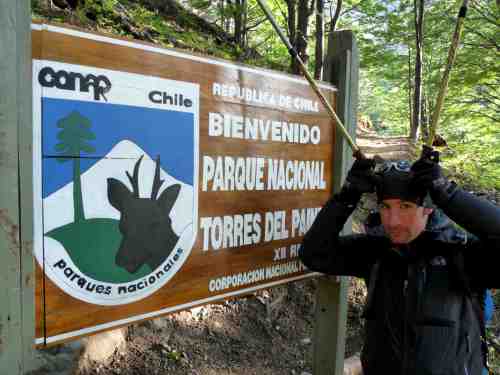


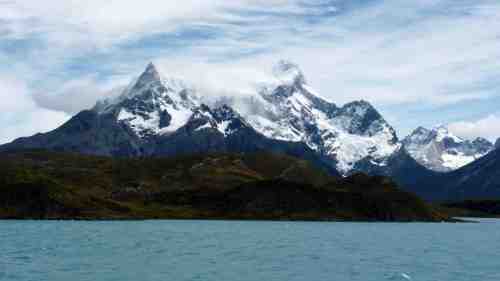

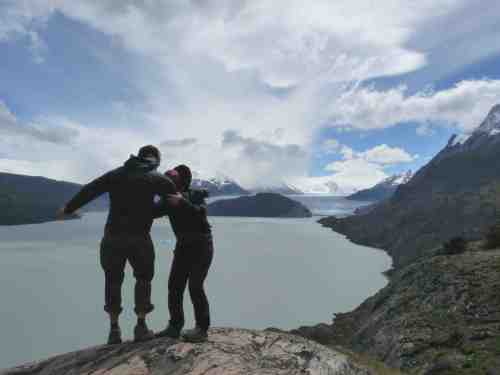


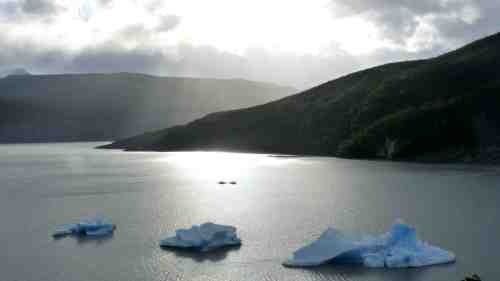

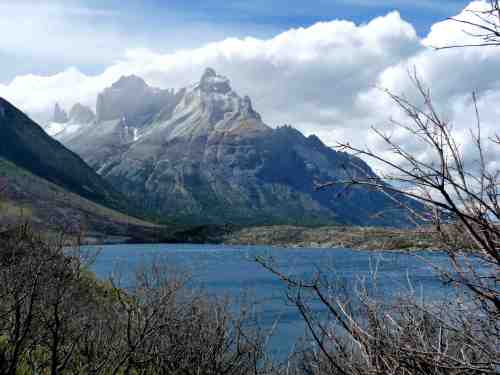
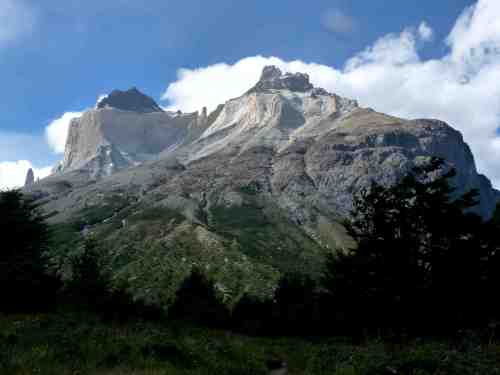
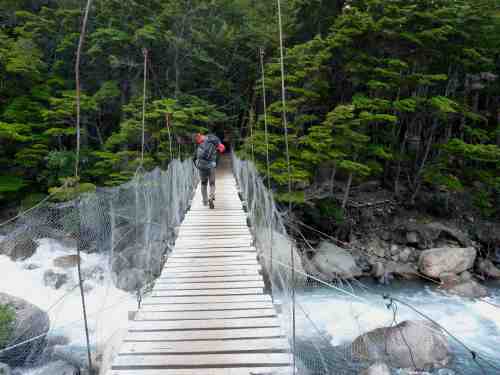
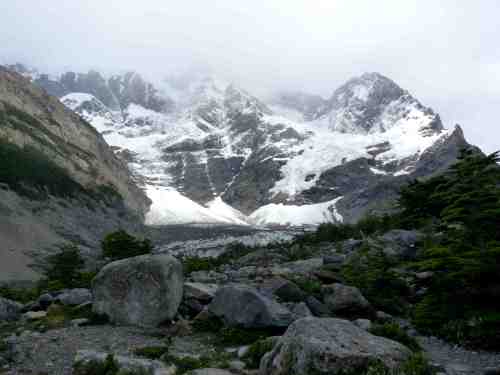
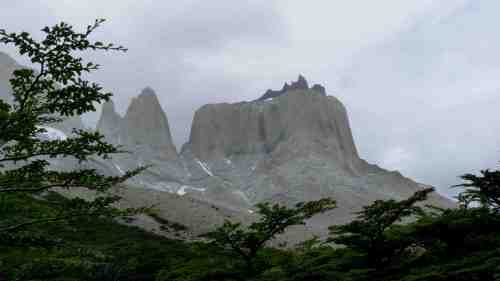
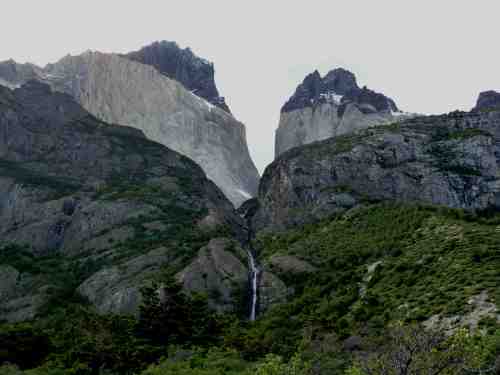
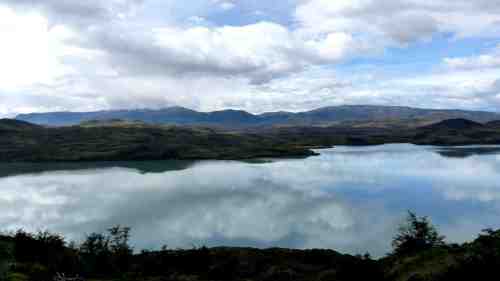
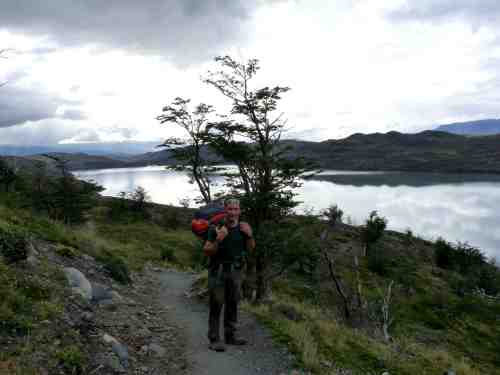

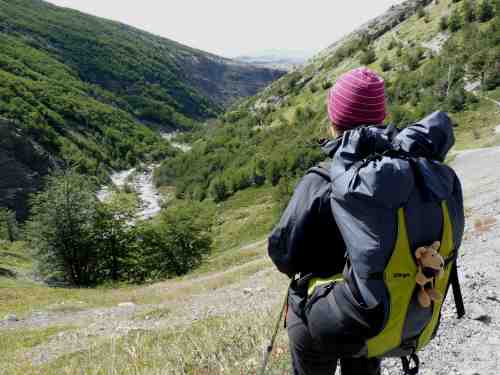
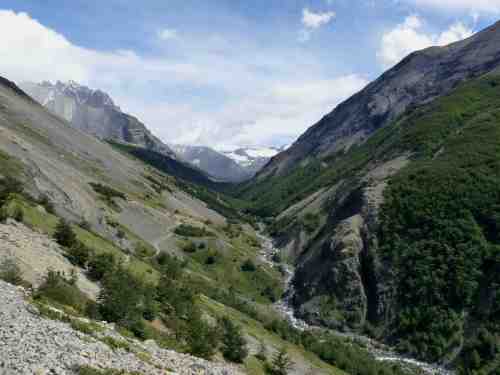


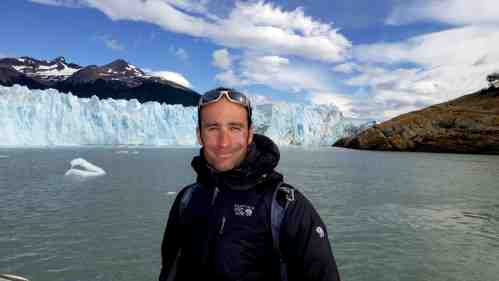
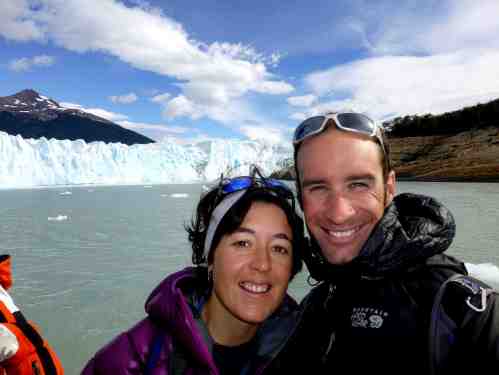
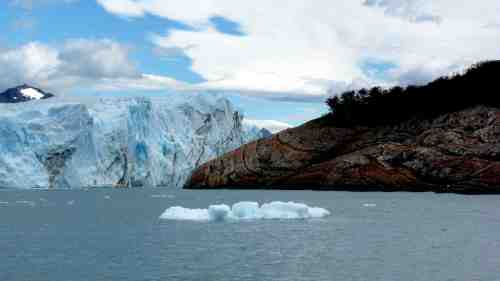
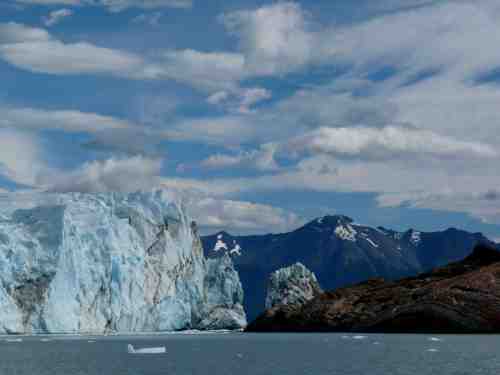
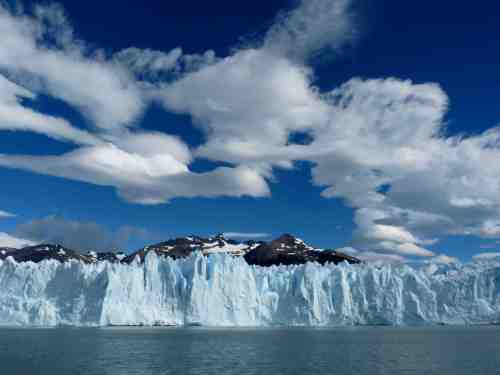

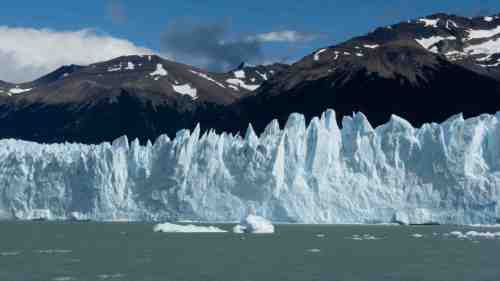
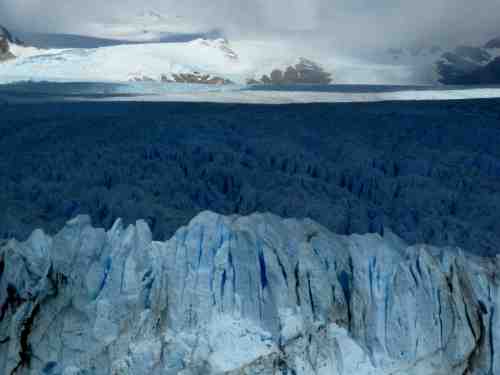
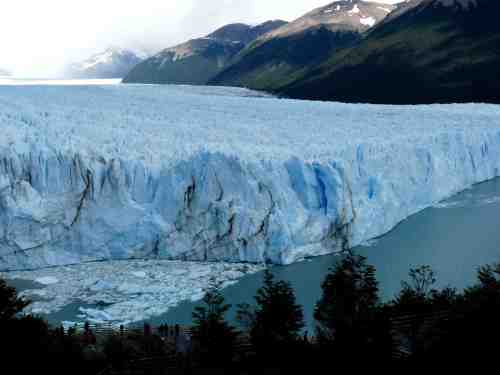
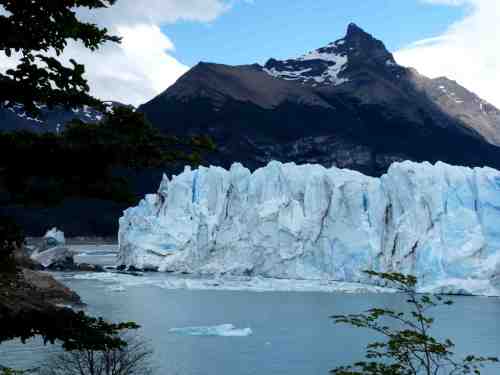


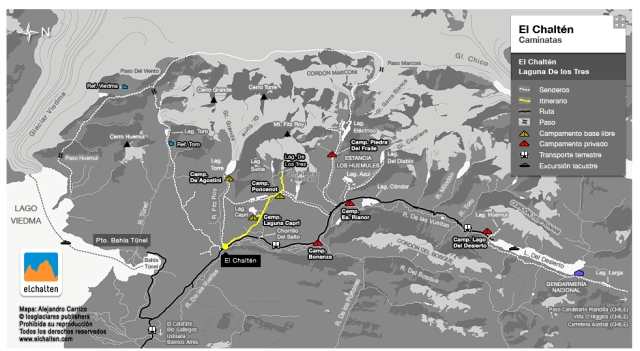
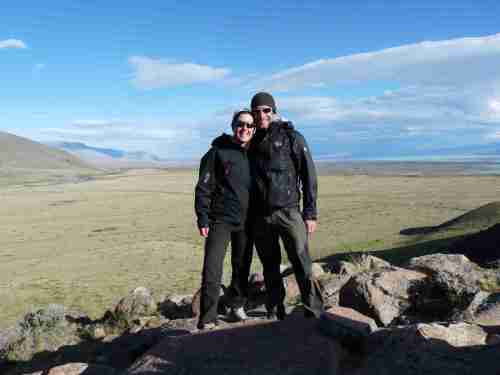
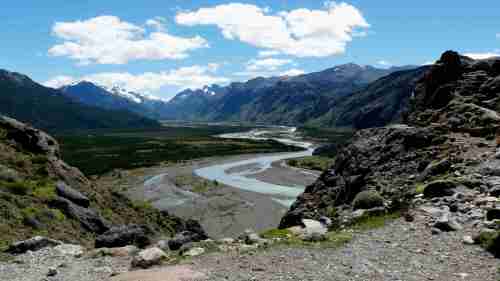





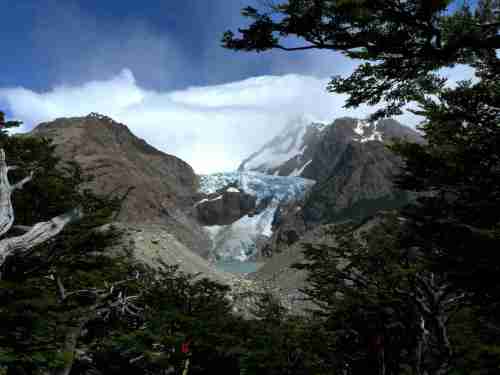

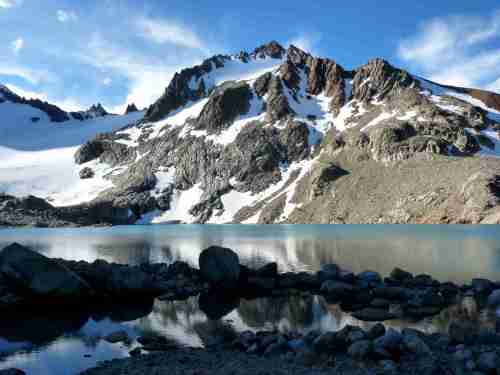
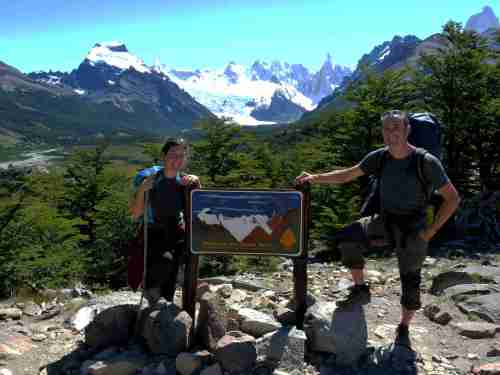
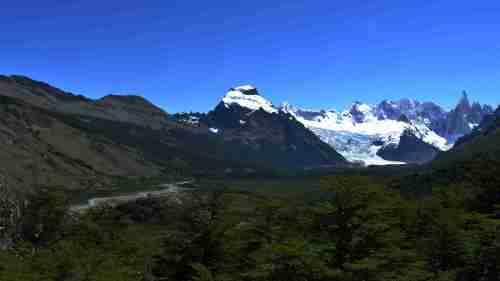

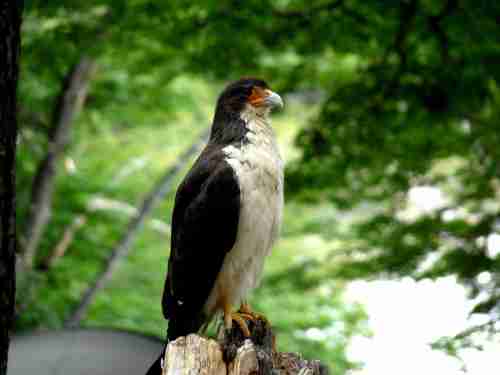
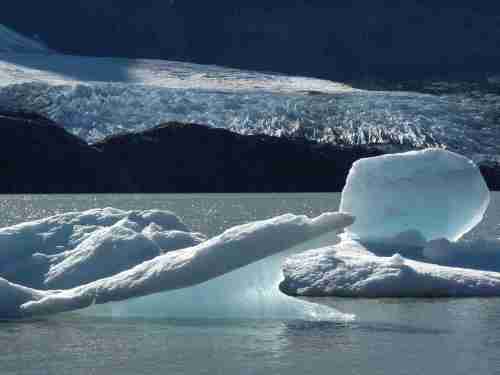

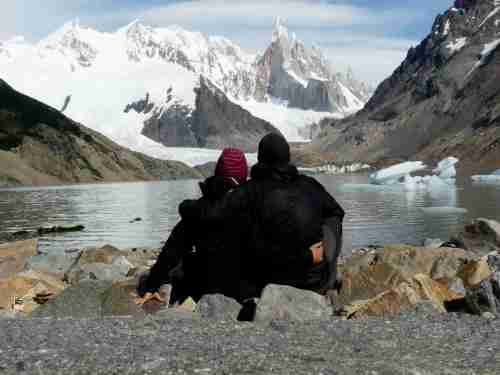
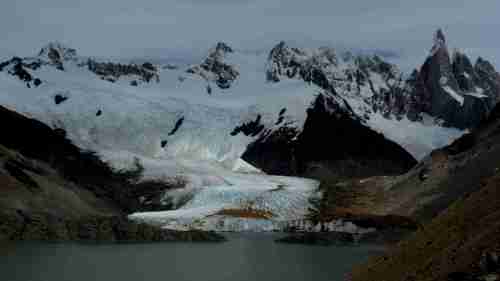
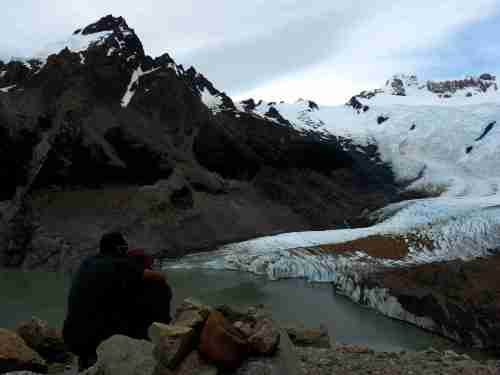
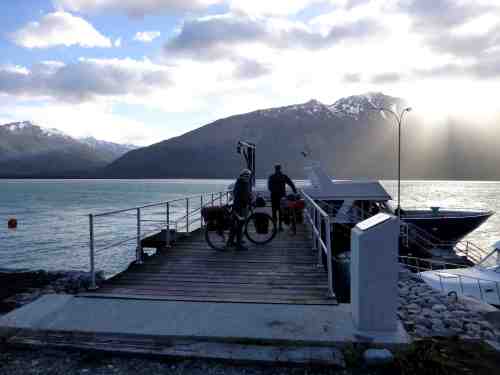


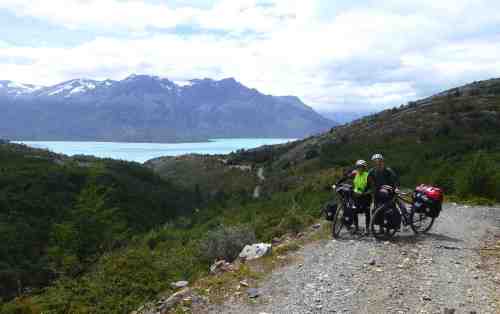

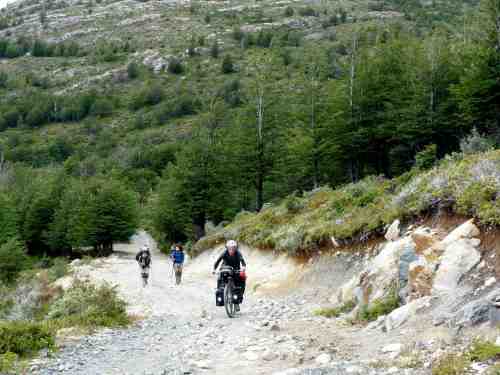

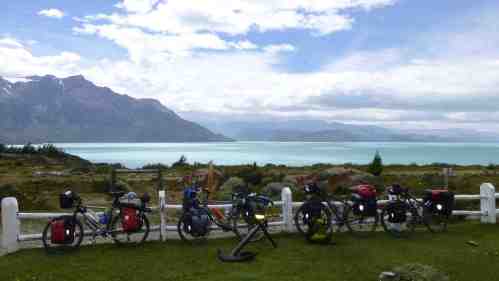 Preparando los pasaportes de nuevo / Again getting the passports ready
Preparando los pasaportes de nuevo / Again getting the passports ready

